You are using an out of date browser. It may not display this or other websites correctly.
You should upgrade or use an alternative browser.
You should upgrade or use an alternative browser.
THE MYSTERY/CONSPIRACY/PARANORMAL/ANCIENT KNOWLEDGE THREAD
- Thread starter dbluesun
- Start date
Br
original post by darth frosty
i'm just saving it here,thanks dawg
Something I've rewatched. A lot of good info.
I bet 99% of you are clueless that President Obama signed this Executive Order back in 2012.
Trump never revoked it and Biden has done nothing.
Executive Order -- National Defense Resources Preparedness
March 16, 2012

 obamawhitehouse.archives.gov
obamawhitehouse.archives.gov
EXECUTIVE ORDER
NATIONAL DEFENSE RESOURCES PREPAREDNESS
By the authority vested in me as President by the Constitution and the laws of the United States of America, including the Defense Production Act of 1950, as amended (50 U.S.C. App. 2061 et seq.), and section 301 of title 3, United States Code, and as Commander in Chief of the Armed Forces of the United States, it is hereby ordered as follows:
PART I - PURPOSE, POLICY, AND IMPLEMENTATION
Section 101. Purpose. This order delegates authorities and addresses national defense resource policies and programs under the Defense Production Act of 1950, as amended (the "Act").
Sec. 102. Policy. The United States must have an industrial and technological base capable of meeting national defense requirements and capable of contributing to the technological superiority of its national defense equipment in peacetime and in times of national emergency. The domestic industrial and technological base is the foundation for national defense preparedness. The authorities provided in the Act shall be used to strengthen this base and to ensure it is capable of responding to the national defense needs of the United States.
Sec. 103. General Functions. Executive departments and agencies (agencies) responsible for plans and programs relating to national defense (as defined in section 801(j) of this order), or for resources and services needed to support such plans and programs, shall:
(a) identify requirements for the full spectrum of emergencies, including essential military and civilian demand;
(b) assess on an ongoing basis the capability of the domestic industrial and technological base to satisfy requirements in peacetime and times of national emergency, specifically evaluating the availability of the most critical resource and production sources, including subcontractors and suppliers, materials, skilled labor, and professional and technical personnel;
(c) be prepared, in the event of a potential threat to the security of the United States, to take actions necessary to ensure the availability of adequate resources and production capability, including services and critical technology, for national defense requirements;
(d) improve the efficiency and responsiveness of the domestic industrial base to support national defense requirements; and
(e) foster cooperation between the defense and commercial sectors for research and development and for acquisition of materials, services, components, and equipment to enhance industrial base efficiency and responsiveness.
Sec. 104. Implementation. (a) The National Security Council and Homeland Security Council, in conjunction with the National Economic Council, shall serve as the integrated policymaking forum for consideration and formulation of national defense resource preparedness policy and shall make recommendations to the President on the use of authorities under the Act.
(b) The Secretary of Homeland Security shall:
(1) advise the President on issues of national defense resource preparedness and on the use of the authorities and functions delegated by this order;
(2) provide for the central coordination of the plans and programs incident to authorities and functions delegated under this order, and provide guidance to agencies assigned functions under this order, developed in consultation with such agencies; and
(3) report to the President periodically concerning all program activities conducted pursuant to this order.
(c) The Defense Production Act Committee, described in section 701 of this order, shall:
(1) in a manner consistent with section 2(b) of the Act, 50 U.S.C. App. 2062(b), advise the President through the Assistant to the President and National Security Advisor, the Assistant to the President for Homeland Security and Counterterrorism, and the Assistant to the President for Economic Policy on the effective use of the authorities under the Act; and
(2) prepare and coordinate an annual report to the Congress pursuant to section 722(d) of the Act, 50 U.S.C. App. 2171(d).
(d) The Secretary of Commerce, in cooperation with the Secretary of Defense, the Secretary of Homeland Security, and other agencies, shall:
(1) analyze potential effects of national emergencies on actual production capability, taking into account the entire production system, including shortages of resources, and develop recommended preparedness measures to strengthen capabilities for production increases in national emergencies; and
(2) perform industry analyses to assess capabilities of the industrial base to support the national defense, and develop policy recommendations to improve the international competitiveness of specific domestic industries and their abilities to meet national defense program needs.
PART II - PRIORITIES AND ALLOCATIONS
Sec. 201. Priorities and Allocations Authorities. (a) The authority of the President conferred by section 101 of the Act, 50 U.S.C. App. 2071, to require acceptance and priority performance of contracts or orders (other than contracts of employment) to promote the national defense over performance of any other contracts or orders, and to allocate materials, services, and facilities as deemed necessary or appropriate to promote the national defense, is delegated to the following agency heads:
(1) the Secretary of Agriculture with respect to food resources, food resource facilities, livestock resources, veterinary resources, plant health resources, and the domestic distribution of farm equipment and commercial fertilizer;
(2) the Secretary of Energy with respect to all forms of energy;
(3) the Secretary of Health and Human Services with respect to health resources;
(4) the Secretary of Transportation with respect to all forms of civil transportation;
(5) the Secretary of Defense with respect to water resources; and
(6) the Secretary of Commerce with respect to all other materials, services, and facilities, including construction materials.
(b) The Secretary of each agency delegated authority under subsection (a) of this section (resource departments) shall plan for and issue regulations to prioritize and allocate resources and establish standards and procedures by which the authority shall be used to promote the national defense, under both emergency and non-emergency conditions. Each Secretary shall authorize the heads of other agencies, as appropriate, to place priority ratings on contracts and orders for materials, services, and facilities needed in support of programs approved under section 202 of this order.
(c) Each resource department shall act, as necessary and appropriate, upon requests for special priorities assistance, as defined by section 801(l) of this order, in a time frame consistent with the urgency of the need at hand. In situations where there are competing program requirements for limited resources, the resource department shall consult with the Secretary who made the required determination under section 202 of this order. Such Secretary shall coordinate with and identify for the resource department which program requirements to prioritize on the basis of operational urgency. In situations involving more than one Secretary making such a required determination under section 202 of this order, the Secretaries shall coordinate with and identify for the resource department which program requirements should receive priority on the basis of operational urgency.
(d) If agreement cannot be reached between two such Secretaries, then the issue shall be referred to the President through the Assistant to the President and National Security Advisor and the Assistant to the President for Homeland Security and Counterterrorism.
(e) The Secretary of each resource department, when necessary, shall make the finding required under section 101(b) of the Act, 50 U.S.C. App. 2071(b). This finding shall be submitted for the President's approval through the Assistant to the President and National Security Advisor and the Assistant to the President for Homeland Security and Counterterrorism. Upon such approval, the Secretary of the resource department that made the finding may use the authority of section 101(a) of the Act, 50 U.S.C. App. 2071(a), to control the general distribution of any material (including applicable services) in the civilian market.
Sec. 202. Determinations. Except as provided in section 201(e) of this order, the authority delegated by section 201 of this order may be used only to support programs that have been determined in writing as necessary or appropriate to promote the national defense:
(a) by the Secretary of Defense with respect to military production and construction, military assistance to foreign nations, military use of civil transportation, stockpiles managed by the Department of Defense, space, and directly related activities;
(b) by the Secretary of Energy with respect to energy production and construction, distribution and use, and directly related activities; and
(c) by the Secretary of Homeland Security with respect to all other national defense programs, including civil defense and continuity of Government.
Sec. 203. Maximizing Domestic Energy Supplies. The authorities of the President under section 101(c)(1) (2) of the Act, 50 U.S.C. App. 2071(c)(1) (2), are delegated to the Secretary of Commerce, with the exception that the authority to make findings that materials (including equipment), services, and facilities are critical and essential, as described in section 101(c)(2)(A) of the Act, 50 U.S.C. App. 2071(c)(2)(A), is delegated to the Secretary of Energy.
Sec. 204. Chemical and Biological Warfare. The authority of the President conferred by section 104(b) of the Act, 50 U.S.C. App. 2074(b), is delegated to the Secretary of Defense. This authority may not be further delegated by the Secretary.
PART III - EXPANSION OF PRODUCTIVE CAPACITY AND SUPPLY
Sec. 301. Loan Guarantees. (a) To reduce current or projected shortfalls of resources, critical technology items, or materials essential for the national defense, the head of each agency engaged in procurement for the national defense, as defined in section 801(h) of this order, is authorized pursuant to section 301 of the Act, 50 U.S.C. App. 2091, to guarantee loans by private institutions.
(b) Each guaranteeing agency is designated and authorized to: (1) act as fiscal agent in the making of its own guarantee contracts and in otherwise carrying out the purposes of section 301 of the Act; and (2) contract with any Federal Reserve Bank to assist the agency in serving as fiscal agent.
(c) Terms and conditions of guarantees under this authority shall be determined in consultation with the Secretary of the Treasury and the Director of the Office of Management and Budget (OMB). The guaranteeing agency is authorized, following such consultation, to prescribe: (1) either specifically or by maximum limits or otherwise, rates of interest, guarantee and commitment fees, and other charges which may be made in connection with such guarantee contracts; and (2) regulations governing the forms and procedures (which shall be uniform to the extent practicable) to be utilized in connection therewith.
Sec. 302. Loans. To reduce current or projected shortfalls of resources, critical technology items, or materials essential for the national defense, the head of each agency engaged in procurement for the national defense is delegated the authority of the President under section 302 of the Act, 50 U.S.C. App. 2092, to make loans thereunder. Terms and conditions of loans under this authority shall be determined in consultation with the Secretary of the Treasury and the Director of OMB.
Sec. 303. Additional Authorities. (a) To create, maintain, protect, expand, or restore domestic industrial base capabilities essential for the national defense, the head of each agency engaged in procurement for the national defense is delegated the authority of the President under section 303 of the Act, 50 U.S.C. App. 2093, to make provision for purchases of, or commitments to purchase, an industrial resource or a critical technology item for Government use or resale, and to make provision for the development of production capabilities, and for the increased use of emerging technologies in security program applications, and to enable rapid transition of emerging technologies.
(b) Materials acquired under section 303 of the Act, 50 U.S.C. App. 2093, that exceed the needs of the programs under the Act may be transferred to the National Defense Stockpile, if, in the judgment of the Secretary of Defense as the National Defense Stockpile Manager, such transfers are in the public interest.
Sec. 304. Subsidy Payments. To ensure the supply of raw or nonprocessed materials from high cost sources, or to ensure maximum production or supply in any area at stable prices of any materials in light of a temporary increase in transportation cost, the head of each agency engaged in procurement for the national defense is delegated the authority of the President under section 303(c) of the Act, 50 U.S.C. App. 2093(c), to make subsidy payments, after consultation with the Secretary of the Treasury and the Director of OMB.
Sec. 305. Determinations and Findings. (a) Pursuant to budget authority provided by an appropriations act in advance for credit assistance under section 301 or 302 of the Act, 50 U.S.C. App. 2091, 2092, and consistent with the Federal Credit Reform Act of 1990, as amended (FCRA), 2 U.S.C. 661 et seq., the head of each agency engaged in procurement for the national defense is delegated the authority to make the determinations set forth in sections 301(a)(2) and 302(b)(2) of the Act, in consultation with the Secretary making the required determination under section 202 of this order; provided, that such determinations shall be made after due consideration of the provisions of OMB Circular A 129 and the credit subsidy score for the relevant loan or loan guarantee as approved by OMB pursuant to FCRA.
(b) Other than any determination by the President under section 303(a)(7)(b) of the Act, the head of each agency engaged in procurement for the national defense is delegated the authority to make the required determinations, judgments, certifications, findings, and notifications defined under section 303 of the Act, 50 U.S.C. App. 2093, in consultation with the Secretary making the required determination under section 202 of this order.
Sec. 306. Strategic and Critical Materials. The Secretary of Defense, and the Secretary of the Interior in consultation with the Secretary of Defense as the National Defense Stockpile Manager, are each delegated the authority of the President under section 303(a)(1)(B) of the Act, 50 U.S.C. App. 2093(a)(1)(B), to encourage the exploration, development, and mining of strategic and critical materials and other materials.
Sec. 307. Substitutes. The head of each agency engaged in procurement for the national defense is delegated the authority of the President under section 303(g) of the Act, 50 U.S.C. App. 2093(g), to make provision for the development of substitutes for strategic and critical materials, critical components, critical technology items, and other resources to aid the national defense.
Sec. 308. Government-Owned Equipment. The head of each agency engaged in procurement for the national defense is delegated the authority of the President under section 303(e) of the Act, 50 U.S.C. App. 2093(e), to:
(a) procure and install additional equipment, facilities, processes, or improvements to plants, factories, and other industrial facilities owned by the Federal Government and to procure and install Government owned equipment in plants, factories, or other industrial facilities owned by private persons;
(b) provide for the modification or expansion of privately owned facilities, including the modification or improvement of production processes, when taking actions under sections 301, 302, or 303 of the Act, 50 U.S.C. App. 2091, 2092, 2093; and
(c) sell or otherwise transfer equipment owned by the Federal Government and installed under section 303(e) of the Act, 50 U.S.C. App. 2093(e), to the owners of such plants, factories, or other industrial facilities.
Sec. 309. Defense Production Act Fund. The Secretary of Defense is designated the Defense Production Act Fund Manager, in accordance with section 304(f) of the Act, 50 U.S.C. App. 2094(f), and shall carry out the duties specified in section 304 of the Act, in consultation with the agency heads having approved, and appropriated funds for, projects under title III of the Act.
Sec. 310. Critical Items. The head of each agency engaged in procurement for the national defense is delegated the authority of the President under section 107(b)(1) of the Act, 50 U.S.C. App. 2077(b)(1), to take appropriate action to ensure that critical components, critical technology items, essential materials, and industrial resources are available from reliable sources when needed to meet defense requirements during peacetime, graduated mobilization, and national emergency. Appropriate action may include restricting contract solicitations to reliable sources, restricting contract solicitations to domestic sources (pursuant to statutory authority), stockpiling critical components, and developing substitutes for critical components or critical technology items.
Sec. 311. Strengthening Domestic Capability. The head of each agency engaged in procurement for the national defense is delegated the authority of the President under section 107(a) of the Act, 50 U.S.C. App. 2077(a), to utilize the authority of title III of the Act or any other provision of law to provide appropriate incentives to develop, maintain, modernize, restore, and expand the productive capacities of domestic sources for critical components, critical technology items, materials, and industrial resources essential for the execution of the national security strategy of the United States.
Sec. 312. Modernization of Equipment. The head of each agency engaged in procurement for the national defense, in accordance with section 108(b) of the Act, 50 U.S.C. App. 2078(b), may utilize the authority of title III of the Act to guarantee the purchase or lease of advance manufacturing equipment, and any related services with respect to any such equipment for purposes of the Act. In considering title III projects, the head of each agency engaged in procurement for the national defense shall provide a strong preference for proposals submitted by a small business supplier or subcontractor in accordance with section 108(b)(2) of the Act, 50 U.S.C. App. 2078(b)(2).
PART IV - VOLUNTARY AGREEMENTS AND ADVISORY COMMITTEES
Sec. 401. Delegations. The authority of the President under sections 708(c) and (d) of the Act, 50 U.S.C. App. 2158(c), (d), is delegated to the heads of agencies otherwise delegated authority under this order. The status of the use of such delegations shall be furnished to the Secretary of Homeland Security.
Sec. 402. Advisory Committees. The authority of the President under section 708(d) of the Act, 50 U.S.C. App. 2158(d), and delegated in section 401 of this order (relating to establishment of advisory committees) shall be exercised only after consultation with, and in accordance with, guidelines and procedures established by the Administrator of General Services.
Sec. 403. Regulations. The Secretary of Homeland Security, after approval of the Attorney General, and after consultation by the Attorney General with the Chairman of the Federal Trade Commission, shall promulgate rules pursuant to section 708(e) of the Act, 50 U.S.C. App. 2158(e), incorporating standards and procedures by which voluntary agreements and plans of action may be developed and carried out. Such rules may be adopted by other agencies to fulfill the rulemaking requirement of section 708(e) of the Act, 50 U.S.C. App. 2158(e).
PART V - EMPLOYMENT OF PERSONNEL
Sec. 501. National Defense Executive Reserve. (a) In accordance with section 710(e) of the Act, 50 U.S.C. App. 2160(e), there is established in the executive branch a National Defense Executive Reserve (NDER) composed of persons of recognized expertise from various segments of the private sector and from Government (except full time Federal employees) for training for employment in executive positions in the Federal Government in the event of a national defense emergency.
(b) The Secretary of Homeland Security shall issue necessary guidance for the NDER program, including appropriate guidance for establishment, recruitment, training, monitoring, and activation of NDER units and shall be responsible for the overall coordination of the NDER program. The authority of the President under section 710(e) of the Act, 50 U.S.C. App. 2160(e), to determine periods of national defense emergency is delegated to the Secretary of Homeland Security.
(c) The head of any agency may implement section 501(a) of this order with respect to NDER operations in such agency.
(d) The head of each agency with an NDER unit may exercise the authority under section 703 of the Act, 50 U.S.C. App. 2153, to employ civilian personnel when activating all or a part of its NDER unit. The exercise of this authority shall be subject to the provisions of sections 501(e) and (f) of this order and shall not be redelegated.
(e) The head of an agency may activate an NDER unit, in whole or in part, upon the written determination of the Secretary of Homeland Security that an emergency affecting the national defense exists and that the activation of the unit is necessary to carry out the emergency program functions of the agency.
(f) Prior to activating the NDER unit, the head of the agency shall notify, in writing, the Assistant to the President for Homeland Security and Counterterrorism of the impending activation.
Sec. 502. Consultants. The head of each agency otherwise delegated functions under this order is delegated the authority of the President under sections 710(b) and (c) of the Act, 50 U.S.C. App. 2160(b), (c), to employ persons of outstanding experience and ability without compensation and to employ experts, consultants, or organizations. The authority delegated by this section may not be redelegated.
PART VI - LABOR REQUIREMENTS
Sec. 601. Secretary of Labor. (a) The Secretary of Labor, in coordination with the Secretary of Defense and the heads of other agencies, as deemed appropriate by the Secretary of Labor, shall:
(1) collect and maintain data necessary to make a continuing appraisal of the Nation's workforce needs for purposes of national defense;
(2) upon request by the Director of Selective Service, and in coordination with the Secretary of Defense, assist the Director of Selective Service in development of policies regulating the induction and deferment of persons for duty in the armed services;
(3) upon request from the head of an agency with authority under this order, consult with that agency with respect to: (i) the effect of contemplated actions on labor demand and utilization; (ii) the relation of labor demand to materials and facilities requirements; and (iii) such other matters as will assist in making the exercise of priority and allocations functions consistent with effective utilization and distribution of labor;
(4) upon request from the head of an agency with authority under this order: (i) formulate plans, programs, and policies for meeting the labor requirements of actions to be taken for national defense purposes; and (ii) estimate training needs to help address national defense requirements and promote necessary and appropriate training programs; and
(5) develop and implement an effective labor management relations policy to support the activities and programs under this order, with the cooperation of other agencies as deemed appropriate by the Secretary of Labor, including the National Labor Relations Board, the Federal Labor Relations Authority, the National Mediation Board, and the Federal Mediation and Conciliation Service.
(b) All agencies shall cooperate with the Secretary of Labor, upon request, for the purposes of this section, to the extent permitted by law.
PART VII - DEFENSE PRODUCTION ACT COMMITTEE
Sec. 701. The Defense Production Act Committee. (a) The Defense Production Act Committee (Committee) shall be composed of the following members, in accordance with section 722(b) of the Act, 50 U.S.C. App. 2171(b):
(1) The Secretary of State;
(2) The Secretary of the Treasury;
(3) The Secretary of Defense;
(4) The Attorney General;
(5) The Secretary of the Interior;
(6) The Secretary of Agriculture;
(7) The Secretary of Commerce;
(8) The Secretary of Labor;
(9) The Secretary of Health and Human Services;
(10) The Secretary of Transportation;
(11) The Secretary of Energy;
(12) The Secretary of Homeland Security;
(13) The Director of National Intelligence;
(14) The Director of the Central Intelligence Agency;
(15) The Chair of the Council of Economic Advisers;
(16) The Administrator of the National Aeronautics and Space Administration; and
(17) The Administrator of General Services.
(b) The Director of OMB and the Director of the Office of Science and Technology Policy shall be invited to participate in all Committee meetings and activities in an advisory role. The Chairperson, as designated by the President pursuant to section 722 of the Act, 50 U.S.C. App. 2171, may invite the heads of other agencies or offices to participate in Committee meetings and activities in an advisory role, as appropriate.
Sec. 702. Offsets. The Secretary of Commerce shall prepare and submit to the Congress the annual report required by section 723 of the Act, 50 U.S.C. App. 2172, in consultation with the Secretaries of State, the Treasury, Defense, and Labor, the United States Trade Representative, the Director of National Intelligence, and the heads of other agencies as appropriate. The heads of agencies shall provide the Secretary of Commerce with such information as may be necessary for the effective performance of this function.
PART VIII - GENERAL PROVISIONS
Sec. 801. Definitions. In addition to the definitions in section 702 of the Act, 50 U.S.C. App. 2152, the following definitions apply throughout this order:
(a) "Civil transportation" includes movement of persons and property by all modes of transportation in interstate, intrastate, or foreign commerce within the United States, its territories and possessions, and the District of Columbia, and related public storage and warehousing, ports, services, equipment and facilities, such as transportation carrier shop and repair facilities. "Civil transportation" also shall include direction, control, and coordination of civil transportation capacity regardless of ownership. "Civil transportation" shall not include transportation owned or controlled by the Department of Defense, use of petroleum and gas pipelines, and coal slurry pipelines used only to supply energy production facilities directly.
(b) "Energy" means all forms of energy including petroleum, gas (both natural and manufactured), electricity, solid fuels (including all forms of coal, coke, coal chemicals, coal liquification, and coal gasification), solar, wind, other types of renewable energy, atomic energy, and the production, conservation, use, control, and distribution (including pipelines) of all of these forms of energy.
(c) "Farm equipment" means equipment, machinery, and repair parts manufactured for use on farms in connection with the production or preparation for market use of food resources.
(d) "Fertilizer" means any product or combination of products that contain one or more of the elements nitrogen, phosphorus, and potassium for use as a plant nutrient.
(e) "Food resources" means all commodities and products, (simple, mixed, or compound), or complements to such commodities or products, that are capable of being ingested by either human beings or animals, irrespective of other uses to which such commodities or products may be put, at all stages of processing from the raw commodity to the products thereof in vendible form for human or animal consumption. "Food resources" also means potable water packaged in commercially marketable containers, all starches, sugars, vegetable and animal or marine fats and oils, seed, cotton, hemp, and flax fiber, but does not mean any such material after it loses its identity as an agricultural commodity or agricultural product.
(f) "Food resource facilities" means plants, machinery, vehicles (including on farm), and other facilities required for the production, processing, distribution, and storage (including cold storage) of food resources, and for the domestic distribution of farm equipment and fertilizer (excluding transportation thereof).
(g) "Functions" include powers, duties, authority, responsibilities, and discretion.
(h) "Head of each agency engaged in procurement for the national defense" means the heads of the Departments of State, Justice, the Interior, and Homeland Security, the Office of the Director of National Intelligence, the Central Intelligence Agency, the National Aeronautics and Space Administration, the General Services Administration, and all other agencies with authority delegated under section 201 of this order.
(i) "Health resources" means drugs, biological products, medical devices, materials, facilities, health supplies, services and equipment required to diagnose, mitigate or prevent the impairment of, improve, treat, cure, or restore the physical or mental health conditions of the population.
(j) "National defense" means programs for military and energy production or construction, military or critical infrastructure assistance to any foreign nation, homeland security, stockpiling, space, and any directly related activity. Such term includes emergency preparedness activities conducted pursuant to title VI of the Robert T. Stafford Disaster Relief and Emergency Assistance Act, 42 U.S.C. 5195 et seq., and critical infrastructure protection and restoration.
(k) "Offsets" means compensation practices required as a condition of purchase in either government to government or commercial sales of defense articles and/or defense services as defined by the Arms Export Control Act, 22 U.S.C. 2751 et seq., and the International Traffic in Arms Regulations, 22 C.F.R. 120.1 130.17.
(l) "Special priorities assistance" means action by resource departments to assist with expediting deliveries, placing rated orders, locating suppliers, resolving production or delivery conflicts between various rated orders, addressing problems that arise in the fulfillment of a rated order or other action authorized by a delegated agency, and determining the validity of rated orders.
(m) "Strategic and critical materials" means materials (including energy) that (1) would be needed to supply the military, industrial, and essential civilian needs of the United States during a national emergency, and (2) are not found or produced in the United States in sufficient quantities to meet such need and are vulnerable to the termination or reduction of the availability of the material.
(n) "Water resources" means all usable water, from all sources, within the jurisdiction of the United States, that can be managed, controlled, and allocated to meet emergency requirements, except "water resources" does not include usable water that qualifies as "food resources."
Sec. 802. General. (a) Except as otherwise provided in section 802(c) of this order, the authorities vested in the President by title VII of the Act, 50 U.S.C. App. 2151 et seq., are delegated to the head of each agency in carrying out the delegated authorities under the Act and this order, by the Secretary of Labor in carrying out part VI of this order, and by the Secretary of the Treasury in exercising the functions assigned in Executive Order 11858, as amended.
(b) The authorities that may be exercised and performed pursuant to section 802(a) of this order shall include:
(1) the power to redelegate authorities, and to authorize the successive redelegation of authorities to agencies, officers, and employees of the Government; and
(2) the power of subpoena under section 705 of the Act, 50 U.S.C. App. 2155, with respect to (i) authorities delegated in parts II, III, and section 702 of this order, and (ii) the functions assigned to the Secretary of the Treasury in Executive Order 11858, as amended, provided that the subpoena power referenced in subsections (i) and (ii) shall be utilized only after the scope and purpose of the investigation, inspection, or inquiry to which the subpoena relates have been defined either by the appropriate officer identified in section 802(a) of this order or by such other person or persons as the officer shall designate.
(c) Excluded from the authorities delegated by section 802(a) of this order are authorities delegated by parts IV and V of this order, authorities in section 721 and 722 of the Act, 50 U.S.C. App. 2170 2171, and the authority with respect to fixing compensation under section 703 of the Act, 50 U.S.C. App. 2153.
Sec. 803. Authority. (a) Executive Order 12919 of June 3, 1994, and sections 401(3) (4) of Executive Order 12656 of November 18, 1988, are revoked. All other previously issued orders, regulations, rulings, certificates, directives, and other actions relating to any function affected by this order shall remain in effect except as they are inconsistent with this order or are subsequently amended or revoked under proper authority. Nothing in this order shall affect the validity or force of anything done under previous delegations or other assignment of authority under the Act.
(b) Nothing in this order shall affect the authorities assigned under Executive Order 11858 of May 7, 1975, as amended, except as provided in section 802 of this order.
(c) Nothing in this order shall affect the authorities assigned under Executive Order 12472 of April 3, 1984, as amended.
Sec. 804. General Provisions. (a) Nothing in this order shall be construed to impair or otherwise affect functions of the Director of OMB relating to budgetary, administrative, or legislative proposals.
(b) This order shall be implemented consistent with applicable law and subject to the availability of appropriations.
(c) This order is not intended to, and does not, create any right or benefit, substantive or procedural, enforceable at law or in equity by any party against the United States, its departments, agencies, or entities, its officers, employees, or agents, or any other person.
BARACK OBAMA
THE WHITE HOUSE,
March 16, 2012.
Long Story Short...

Trump never revoked it and Biden has done nothing.
Executive Order -- National Defense Resources Preparedness
March 16, 2012

Executive Order -- National Defense Resources Preparedness
EXECUTIVE ORDER NATIONAL DEFENSE RESOURCES PREPAREDNESS
EXECUTIVE ORDER
NATIONAL DEFENSE RESOURCES PREPAREDNESS
By the authority vested in me as President by the Constitution and the laws of the United States of America, including the Defense Production Act of 1950, as amended (50 U.S.C. App. 2061 et seq.), and section 301 of title 3, United States Code, and as Commander in Chief of the Armed Forces of the United States, it is hereby ordered as follows:
PART I - PURPOSE, POLICY, AND IMPLEMENTATION
Section 101. Purpose. This order delegates authorities and addresses national defense resource policies and programs under the Defense Production Act of 1950, as amended (the "Act").
Sec. 102. Policy. The United States must have an industrial and technological base capable of meeting national defense requirements and capable of contributing to the technological superiority of its national defense equipment in peacetime and in times of national emergency. The domestic industrial and technological base is the foundation for national defense preparedness. The authorities provided in the Act shall be used to strengthen this base and to ensure it is capable of responding to the national defense needs of the United States.
Sec. 103. General Functions. Executive departments and agencies (agencies) responsible for plans and programs relating to national defense (as defined in section 801(j) of this order), or for resources and services needed to support such plans and programs, shall:
(a) identify requirements for the full spectrum of emergencies, including essential military and civilian demand;
(b) assess on an ongoing basis the capability of the domestic industrial and technological base to satisfy requirements in peacetime and times of national emergency, specifically evaluating the availability of the most critical resource and production sources, including subcontractors and suppliers, materials, skilled labor, and professional and technical personnel;
(c) be prepared, in the event of a potential threat to the security of the United States, to take actions necessary to ensure the availability of adequate resources and production capability, including services and critical technology, for national defense requirements;
(d) improve the efficiency and responsiveness of the domestic industrial base to support national defense requirements; and
(e) foster cooperation between the defense and commercial sectors for research and development and for acquisition of materials, services, components, and equipment to enhance industrial base efficiency and responsiveness.
Sec. 104. Implementation. (a) The National Security Council and Homeland Security Council, in conjunction with the National Economic Council, shall serve as the integrated policymaking forum for consideration and formulation of national defense resource preparedness policy and shall make recommendations to the President on the use of authorities under the Act.
(b) The Secretary of Homeland Security shall:
(1) advise the President on issues of national defense resource preparedness and on the use of the authorities and functions delegated by this order;
(2) provide for the central coordination of the plans and programs incident to authorities and functions delegated under this order, and provide guidance to agencies assigned functions under this order, developed in consultation with such agencies; and
(3) report to the President periodically concerning all program activities conducted pursuant to this order.
(c) The Defense Production Act Committee, described in section 701 of this order, shall:
(1) in a manner consistent with section 2(b) of the Act, 50 U.S.C. App. 2062(b), advise the President through the Assistant to the President and National Security Advisor, the Assistant to the President for Homeland Security and Counterterrorism, and the Assistant to the President for Economic Policy on the effective use of the authorities under the Act; and
(2) prepare and coordinate an annual report to the Congress pursuant to section 722(d) of the Act, 50 U.S.C. App. 2171(d).
(d) The Secretary of Commerce, in cooperation with the Secretary of Defense, the Secretary of Homeland Security, and other agencies, shall:
(1) analyze potential effects of national emergencies on actual production capability, taking into account the entire production system, including shortages of resources, and develop recommended preparedness measures to strengthen capabilities for production increases in national emergencies; and
(2) perform industry analyses to assess capabilities of the industrial base to support the national defense, and develop policy recommendations to improve the international competitiveness of specific domestic industries and their abilities to meet national defense program needs.
PART II - PRIORITIES AND ALLOCATIONS
Sec. 201. Priorities and Allocations Authorities. (a) The authority of the President conferred by section 101 of the Act, 50 U.S.C. App. 2071, to require acceptance and priority performance of contracts or orders (other than contracts of employment) to promote the national defense over performance of any other contracts or orders, and to allocate materials, services, and facilities as deemed necessary or appropriate to promote the national defense, is delegated to the following agency heads:
(1) the Secretary of Agriculture with respect to food resources, food resource facilities, livestock resources, veterinary resources, plant health resources, and the domestic distribution of farm equipment and commercial fertilizer;
(2) the Secretary of Energy with respect to all forms of energy;
(3) the Secretary of Health and Human Services with respect to health resources;
(4) the Secretary of Transportation with respect to all forms of civil transportation;
(5) the Secretary of Defense with respect to water resources; and
(6) the Secretary of Commerce with respect to all other materials, services, and facilities, including construction materials.
(b) The Secretary of each agency delegated authority under subsection (a) of this section (resource departments) shall plan for and issue regulations to prioritize and allocate resources and establish standards and procedures by which the authority shall be used to promote the national defense, under both emergency and non-emergency conditions. Each Secretary shall authorize the heads of other agencies, as appropriate, to place priority ratings on contracts and orders for materials, services, and facilities needed in support of programs approved under section 202 of this order.
(c) Each resource department shall act, as necessary and appropriate, upon requests for special priorities assistance, as defined by section 801(l) of this order, in a time frame consistent with the urgency of the need at hand. In situations where there are competing program requirements for limited resources, the resource department shall consult with the Secretary who made the required determination under section 202 of this order. Such Secretary shall coordinate with and identify for the resource department which program requirements to prioritize on the basis of operational urgency. In situations involving more than one Secretary making such a required determination under section 202 of this order, the Secretaries shall coordinate with and identify for the resource department which program requirements should receive priority on the basis of operational urgency.
(d) If agreement cannot be reached between two such Secretaries, then the issue shall be referred to the President through the Assistant to the President and National Security Advisor and the Assistant to the President for Homeland Security and Counterterrorism.
(e) The Secretary of each resource department, when necessary, shall make the finding required under section 101(b) of the Act, 50 U.S.C. App. 2071(b). This finding shall be submitted for the President's approval through the Assistant to the President and National Security Advisor and the Assistant to the President for Homeland Security and Counterterrorism. Upon such approval, the Secretary of the resource department that made the finding may use the authority of section 101(a) of the Act, 50 U.S.C. App. 2071(a), to control the general distribution of any material (including applicable services) in the civilian market.
Sec. 202. Determinations. Except as provided in section 201(e) of this order, the authority delegated by section 201 of this order may be used only to support programs that have been determined in writing as necessary or appropriate to promote the national defense:
(a) by the Secretary of Defense with respect to military production and construction, military assistance to foreign nations, military use of civil transportation, stockpiles managed by the Department of Defense, space, and directly related activities;
(b) by the Secretary of Energy with respect to energy production and construction, distribution and use, and directly related activities; and
(c) by the Secretary of Homeland Security with respect to all other national defense programs, including civil defense and continuity of Government.
Sec. 203. Maximizing Domestic Energy Supplies. The authorities of the President under section 101(c)(1) (2) of the Act, 50 U.S.C. App. 2071(c)(1) (2), are delegated to the Secretary of Commerce, with the exception that the authority to make findings that materials (including equipment), services, and facilities are critical and essential, as described in section 101(c)(2)(A) of the Act, 50 U.S.C. App. 2071(c)(2)(A), is delegated to the Secretary of Energy.
Sec. 204. Chemical and Biological Warfare. The authority of the President conferred by section 104(b) of the Act, 50 U.S.C. App. 2074(b), is delegated to the Secretary of Defense. This authority may not be further delegated by the Secretary.
PART III - EXPANSION OF PRODUCTIVE CAPACITY AND SUPPLY
Sec. 301. Loan Guarantees. (a) To reduce current or projected shortfalls of resources, critical technology items, or materials essential for the national defense, the head of each agency engaged in procurement for the national defense, as defined in section 801(h) of this order, is authorized pursuant to section 301 of the Act, 50 U.S.C. App. 2091, to guarantee loans by private institutions.
(b) Each guaranteeing agency is designated and authorized to: (1) act as fiscal agent in the making of its own guarantee contracts and in otherwise carrying out the purposes of section 301 of the Act; and (2) contract with any Federal Reserve Bank to assist the agency in serving as fiscal agent.
(c) Terms and conditions of guarantees under this authority shall be determined in consultation with the Secretary of the Treasury and the Director of the Office of Management and Budget (OMB). The guaranteeing agency is authorized, following such consultation, to prescribe: (1) either specifically or by maximum limits or otherwise, rates of interest, guarantee and commitment fees, and other charges which may be made in connection with such guarantee contracts; and (2) regulations governing the forms and procedures (which shall be uniform to the extent practicable) to be utilized in connection therewith.
Sec. 302. Loans. To reduce current or projected shortfalls of resources, critical technology items, or materials essential for the national defense, the head of each agency engaged in procurement for the national defense is delegated the authority of the President under section 302 of the Act, 50 U.S.C. App. 2092, to make loans thereunder. Terms and conditions of loans under this authority shall be determined in consultation with the Secretary of the Treasury and the Director of OMB.
Sec. 303. Additional Authorities. (a) To create, maintain, protect, expand, or restore domestic industrial base capabilities essential for the national defense, the head of each agency engaged in procurement for the national defense is delegated the authority of the President under section 303 of the Act, 50 U.S.C. App. 2093, to make provision for purchases of, or commitments to purchase, an industrial resource or a critical technology item for Government use or resale, and to make provision for the development of production capabilities, and for the increased use of emerging technologies in security program applications, and to enable rapid transition of emerging technologies.
(b) Materials acquired under section 303 of the Act, 50 U.S.C. App. 2093, that exceed the needs of the programs under the Act may be transferred to the National Defense Stockpile, if, in the judgment of the Secretary of Defense as the National Defense Stockpile Manager, such transfers are in the public interest.
Sec. 304. Subsidy Payments. To ensure the supply of raw or nonprocessed materials from high cost sources, or to ensure maximum production or supply in any area at stable prices of any materials in light of a temporary increase in transportation cost, the head of each agency engaged in procurement for the national defense is delegated the authority of the President under section 303(c) of the Act, 50 U.S.C. App. 2093(c), to make subsidy payments, after consultation with the Secretary of the Treasury and the Director of OMB.
Sec. 305. Determinations and Findings. (a) Pursuant to budget authority provided by an appropriations act in advance for credit assistance under section 301 or 302 of the Act, 50 U.S.C. App. 2091, 2092, and consistent with the Federal Credit Reform Act of 1990, as amended (FCRA), 2 U.S.C. 661 et seq., the head of each agency engaged in procurement for the national defense is delegated the authority to make the determinations set forth in sections 301(a)(2) and 302(b)(2) of the Act, in consultation with the Secretary making the required determination under section 202 of this order; provided, that such determinations shall be made after due consideration of the provisions of OMB Circular A 129 and the credit subsidy score for the relevant loan or loan guarantee as approved by OMB pursuant to FCRA.
(b) Other than any determination by the President under section 303(a)(7)(b) of the Act, the head of each agency engaged in procurement for the national defense is delegated the authority to make the required determinations, judgments, certifications, findings, and notifications defined under section 303 of the Act, 50 U.S.C. App. 2093, in consultation with the Secretary making the required determination under section 202 of this order.
Sec. 306. Strategic and Critical Materials. The Secretary of Defense, and the Secretary of the Interior in consultation with the Secretary of Defense as the National Defense Stockpile Manager, are each delegated the authority of the President under section 303(a)(1)(B) of the Act, 50 U.S.C. App. 2093(a)(1)(B), to encourage the exploration, development, and mining of strategic and critical materials and other materials.
Sec. 307. Substitutes. The head of each agency engaged in procurement for the national defense is delegated the authority of the President under section 303(g) of the Act, 50 U.S.C. App. 2093(g), to make provision for the development of substitutes for strategic and critical materials, critical components, critical technology items, and other resources to aid the national defense.
Sec. 308. Government-Owned Equipment. The head of each agency engaged in procurement for the national defense is delegated the authority of the President under section 303(e) of the Act, 50 U.S.C. App. 2093(e), to:
(a) procure and install additional equipment, facilities, processes, or improvements to plants, factories, and other industrial facilities owned by the Federal Government and to procure and install Government owned equipment in plants, factories, or other industrial facilities owned by private persons;
(b) provide for the modification or expansion of privately owned facilities, including the modification or improvement of production processes, when taking actions under sections 301, 302, or 303 of the Act, 50 U.S.C. App. 2091, 2092, 2093; and
(c) sell or otherwise transfer equipment owned by the Federal Government and installed under section 303(e) of the Act, 50 U.S.C. App. 2093(e), to the owners of such plants, factories, or other industrial facilities.
Sec. 309. Defense Production Act Fund. The Secretary of Defense is designated the Defense Production Act Fund Manager, in accordance with section 304(f) of the Act, 50 U.S.C. App. 2094(f), and shall carry out the duties specified in section 304 of the Act, in consultation with the agency heads having approved, and appropriated funds for, projects under title III of the Act.
Sec. 310. Critical Items. The head of each agency engaged in procurement for the national defense is delegated the authority of the President under section 107(b)(1) of the Act, 50 U.S.C. App. 2077(b)(1), to take appropriate action to ensure that critical components, critical technology items, essential materials, and industrial resources are available from reliable sources when needed to meet defense requirements during peacetime, graduated mobilization, and national emergency. Appropriate action may include restricting contract solicitations to reliable sources, restricting contract solicitations to domestic sources (pursuant to statutory authority), stockpiling critical components, and developing substitutes for critical components or critical technology items.
Sec. 311. Strengthening Domestic Capability. The head of each agency engaged in procurement for the national defense is delegated the authority of the President under section 107(a) of the Act, 50 U.S.C. App. 2077(a), to utilize the authority of title III of the Act or any other provision of law to provide appropriate incentives to develop, maintain, modernize, restore, and expand the productive capacities of domestic sources for critical components, critical technology items, materials, and industrial resources essential for the execution of the national security strategy of the United States.
Sec. 312. Modernization of Equipment. The head of each agency engaged in procurement for the national defense, in accordance with section 108(b) of the Act, 50 U.S.C. App. 2078(b), may utilize the authority of title III of the Act to guarantee the purchase or lease of advance manufacturing equipment, and any related services with respect to any such equipment for purposes of the Act. In considering title III projects, the head of each agency engaged in procurement for the national defense shall provide a strong preference for proposals submitted by a small business supplier or subcontractor in accordance with section 108(b)(2) of the Act, 50 U.S.C. App. 2078(b)(2).
PART IV - VOLUNTARY AGREEMENTS AND ADVISORY COMMITTEES
Sec. 401. Delegations. The authority of the President under sections 708(c) and (d) of the Act, 50 U.S.C. App. 2158(c), (d), is delegated to the heads of agencies otherwise delegated authority under this order. The status of the use of such delegations shall be furnished to the Secretary of Homeland Security.
Sec. 402. Advisory Committees. The authority of the President under section 708(d) of the Act, 50 U.S.C. App. 2158(d), and delegated in section 401 of this order (relating to establishment of advisory committees) shall be exercised only after consultation with, and in accordance with, guidelines and procedures established by the Administrator of General Services.
Sec. 403. Regulations. The Secretary of Homeland Security, after approval of the Attorney General, and after consultation by the Attorney General with the Chairman of the Federal Trade Commission, shall promulgate rules pursuant to section 708(e) of the Act, 50 U.S.C. App. 2158(e), incorporating standards and procedures by which voluntary agreements and plans of action may be developed and carried out. Such rules may be adopted by other agencies to fulfill the rulemaking requirement of section 708(e) of the Act, 50 U.S.C. App. 2158(e).
PART V - EMPLOYMENT OF PERSONNEL
Sec. 501. National Defense Executive Reserve. (a) In accordance with section 710(e) of the Act, 50 U.S.C. App. 2160(e), there is established in the executive branch a National Defense Executive Reserve (NDER) composed of persons of recognized expertise from various segments of the private sector and from Government (except full time Federal employees) for training for employment in executive positions in the Federal Government in the event of a national defense emergency.
(b) The Secretary of Homeland Security shall issue necessary guidance for the NDER program, including appropriate guidance for establishment, recruitment, training, monitoring, and activation of NDER units and shall be responsible for the overall coordination of the NDER program. The authority of the President under section 710(e) of the Act, 50 U.S.C. App. 2160(e), to determine periods of national defense emergency is delegated to the Secretary of Homeland Security.
(c) The head of any agency may implement section 501(a) of this order with respect to NDER operations in such agency.
(d) The head of each agency with an NDER unit may exercise the authority under section 703 of the Act, 50 U.S.C. App. 2153, to employ civilian personnel when activating all or a part of its NDER unit. The exercise of this authority shall be subject to the provisions of sections 501(e) and (f) of this order and shall not be redelegated.
(e) The head of an agency may activate an NDER unit, in whole or in part, upon the written determination of the Secretary of Homeland Security that an emergency affecting the national defense exists and that the activation of the unit is necessary to carry out the emergency program functions of the agency.
(f) Prior to activating the NDER unit, the head of the agency shall notify, in writing, the Assistant to the President for Homeland Security and Counterterrorism of the impending activation.
Sec. 502. Consultants. The head of each agency otherwise delegated functions under this order is delegated the authority of the President under sections 710(b) and (c) of the Act, 50 U.S.C. App. 2160(b), (c), to employ persons of outstanding experience and ability without compensation and to employ experts, consultants, or organizations. The authority delegated by this section may not be redelegated.
PART VI - LABOR REQUIREMENTS
Sec. 601. Secretary of Labor. (a) The Secretary of Labor, in coordination with the Secretary of Defense and the heads of other agencies, as deemed appropriate by the Secretary of Labor, shall:
(1) collect and maintain data necessary to make a continuing appraisal of the Nation's workforce needs for purposes of national defense;
(2) upon request by the Director of Selective Service, and in coordination with the Secretary of Defense, assist the Director of Selective Service in development of policies regulating the induction and deferment of persons for duty in the armed services;
(3) upon request from the head of an agency with authority under this order, consult with that agency with respect to: (i) the effect of contemplated actions on labor demand and utilization; (ii) the relation of labor demand to materials and facilities requirements; and (iii) such other matters as will assist in making the exercise of priority and allocations functions consistent with effective utilization and distribution of labor;
(4) upon request from the head of an agency with authority under this order: (i) formulate plans, programs, and policies for meeting the labor requirements of actions to be taken for national defense purposes; and (ii) estimate training needs to help address national defense requirements and promote necessary and appropriate training programs; and
(5) develop and implement an effective labor management relations policy to support the activities and programs under this order, with the cooperation of other agencies as deemed appropriate by the Secretary of Labor, including the National Labor Relations Board, the Federal Labor Relations Authority, the National Mediation Board, and the Federal Mediation and Conciliation Service.
(b) All agencies shall cooperate with the Secretary of Labor, upon request, for the purposes of this section, to the extent permitted by law.
PART VII - DEFENSE PRODUCTION ACT COMMITTEE
Sec. 701. The Defense Production Act Committee. (a) The Defense Production Act Committee (Committee) shall be composed of the following members, in accordance with section 722(b) of the Act, 50 U.S.C. App. 2171(b):
(1) The Secretary of State;
(2) The Secretary of the Treasury;
(3) The Secretary of Defense;
(4) The Attorney General;
(5) The Secretary of the Interior;
(6) The Secretary of Agriculture;
(7) The Secretary of Commerce;
(8) The Secretary of Labor;
(9) The Secretary of Health and Human Services;
(10) The Secretary of Transportation;
(11) The Secretary of Energy;
(12) The Secretary of Homeland Security;
(13) The Director of National Intelligence;
(14) The Director of the Central Intelligence Agency;
(15) The Chair of the Council of Economic Advisers;
(16) The Administrator of the National Aeronautics and Space Administration; and
(17) The Administrator of General Services.
(b) The Director of OMB and the Director of the Office of Science and Technology Policy shall be invited to participate in all Committee meetings and activities in an advisory role. The Chairperson, as designated by the President pursuant to section 722 of the Act, 50 U.S.C. App. 2171, may invite the heads of other agencies or offices to participate in Committee meetings and activities in an advisory role, as appropriate.
Sec. 702. Offsets. The Secretary of Commerce shall prepare and submit to the Congress the annual report required by section 723 of the Act, 50 U.S.C. App. 2172, in consultation with the Secretaries of State, the Treasury, Defense, and Labor, the United States Trade Representative, the Director of National Intelligence, and the heads of other agencies as appropriate. The heads of agencies shall provide the Secretary of Commerce with such information as may be necessary for the effective performance of this function.
PART VIII - GENERAL PROVISIONS
Sec. 801. Definitions. In addition to the definitions in section 702 of the Act, 50 U.S.C. App. 2152, the following definitions apply throughout this order:
(a) "Civil transportation" includes movement of persons and property by all modes of transportation in interstate, intrastate, or foreign commerce within the United States, its territories and possessions, and the District of Columbia, and related public storage and warehousing, ports, services, equipment and facilities, such as transportation carrier shop and repair facilities. "Civil transportation" also shall include direction, control, and coordination of civil transportation capacity regardless of ownership. "Civil transportation" shall not include transportation owned or controlled by the Department of Defense, use of petroleum and gas pipelines, and coal slurry pipelines used only to supply energy production facilities directly.
(b) "Energy" means all forms of energy including petroleum, gas (both natural and manufactured), electricity, solid fuels (including all forms of coal, coke, coal chemicals, coal liquification, and coal gasification), solar, wind, other types of renewable energy, atomic energy, and the production, conservation, use, control, and distribution (including pipelines) of all of these forms of energy.
(c) "Farm equipment" means equipment, machinery, and repair parts manufactured for use on farms in connection with the production or preparation for market use of food resources.
(d) "Fertilizer" means any product or combination of products that contain one or more of the elements nitrogen, phosphorus, and potassium for use as a plant nutrient.
(e) "Food resources" means all commodities and products, (simple, mixed, or compound), or complements to such commodities or products, that are capable of being ingested by either human beings or animals, irrespective of other uses to which such commodities or products may be put, at all stages of processing from the raw commodity to the products thereof in vendible form for human or animal consumption. "Food resources" also means potable water packaged in commercially marketable containers, all starches, sugars, vegetable and animal or marine fats and oils, seed, cotton, hemp, and flax fiber, but does not mean any such material after it loses its identity as an agricultural commodity or agricultural product.
(f) "Food resource facilities" means plants, machinery, vehicles (including on farm), and other facilities required for the production, processing, distribution, and storage (including cold storage) of food resources, and for the domestic distribution of farm equipment and fertilizer (excluding transportation thereof).
(g) "Functions" include powers, duties, authority, responsibilities, and discretion.
(h) "Head of each agency engaged in procurement for the national defense" means the heads of the Departments of State, Justice, the Interior, and Homeland Security, the Office of the Director of National Intelligence, the Central Intelligence Agency, the National Aeronautics and Space Administration, the General Services Administration, and all other agencies with authority delegated under section 201 of this order.
(i) "Health resources" means drugs, biological products, medical devices, materials, facilities, health supplies, services and equipment required to diagnose, mitigate or prevent the impairment of, improve, treat, cure, or restore the physical or mental health conditions of the population.
(j) "National defense" means programs for military and energy production or construction, military or critical infrastructure assistance to any foreign nation, homeland security, stockpiling, space, and any directly related activity. Such term includes emergency preparedness activities conducted pursuant to title VI of the Robert T. Stafford Disaster Relief and Emergency Assistance Act, 42 U.S.C. 5195 et seq., and critical infrastructure protection and restoration.
(k) "Offsets" means compensation practices required as a condition of purchase in either government to government or commercial sales of defense articles and/or defense services as defined by the Arms Export Control Act, 22 U.S.C. 2751 et seq., and the International Traffic in Arms Regulations, 22 C.F.R. 120.1 130.17.
(l) "Special priorities assistance" means action by resource departments to assist with expediting deliveries, placing rated orders, locating suppliers, resolving production or delivery conflicts between various rated orders, addressing problems that arise in the fulfillment of a rated order or other action authorized by a delegated agency, and determining the validity of rated orders.
(m) "Strategic and critical materials" means materials (including energy) that (1) would be needed to supply the military, industrial, and essential civilian needs of the United States during a national emergency, and (2) are not found or produced in the United States in sufficient quantities to meet such need and are vulnerable to the termination or reduction of the availability of the material.
(n) "Water resources" means all usable water, from all sources, within the jurisdiction of the United States, that can be managed, controlled, and allocated to meet emergency requirements, except "water resources" does not include usable water that qualifies as "food resources."
Sec. 802. General. (a) Except as otherwise provided in section 802(c) of this order, the authorities vested in the President by title VII of the Act, 50 U.S.C. App. 2151 et seq., are delegated to the head of each agency in carrying out the delegated authorities under the Act and this order, by the Secretary of Labor in carrying out part VI of this order, and by the Secretary of the Treasury in exercising the functions assigned in Executive Order 11858, as amended.
(b) The authorities that may be exercised and performed pursuant to section 802(a) of this order shall include:
(1) the power to redelegate authorities, and to authorize the successive redelegation of authorities to agencies, officers, and employees of the Government; and
(2) the power of subpoena under section 705 of the Act, 50 U.S.C. App. 2155, with respect to (i) authorities delegated in parts II, III, and section 702 of this order, and (ii) the functions assigned to the Secretary of the Treasury in Executive Order 11858, as amended, provided that the subpoena power referenced in subsections (i) and (ii) shall be utilized only after the scope and purpose of the investigation, inspection, or inquiry to which the subpoena relates have been defined either by the appropriate officer identified in section 802(a) of this order or by such other person or persons as the officer shall designate.
(c) Excluded from the authorities delegated by section 802(a) of this order are authorities delegated by parts IV and V of this order, authorities in section 721 and 722 of the Act, 50 U.S.C. App. 2170 2171, and the authority with respect to fixing compensation under section 703 of the Act, 50 U.S.C. App. 2153.
Sec. 803. Authority. (a) Executive Order 12919 of June 3, 1994, and sections 401(3) (4) of Executive Order 12656 of November 18, 1988, are revoked. All other previously issued orders, regulations, rulings, certificates, directives, and other actions relating to any function affected by this order shall remain in effect except as they are inconsistent with this order or are subsequently amended or revoked under proper authority. Nothing in this order shall affect the validity or force of anything done under previous delegations or other assignment of authority under the Act.
(b) Nothing in this order shall affect the authorities assigned under Executive Order 11858 of May 7, 1975, as amended, except as provided in section 802 of this order.
(c) Nothing in this order shall affect the authorities assigned under Executive Order 12472 of April 3, 1984, as amended.
Sec. 804. General Provisions. (a) Nothing in this order shall be construed to impair or otherwise affect functions of the Director of OMB relating to budgetary, administrative, or legislative proposals.
(b) This order shall be implemented consistent with applicable law and subject to the availability of appropriations.
(c) This order is not intended to, and does not, create any right or benefit, substantive or procedural, enforceable at law or in equity by any party against the United States, its departments, agencies, or entities, its officers, employees, or agents, or any other person.
BARACK OBAMA
THE WHITE HOUSE,
March 16, 2012.
Long Story Short...

This is for the Covid-19 Conspiracy Cats.
SUMMARY OF MAJOR EVENTS and PROBLEMS
United States Army Chemical Corps
Fiscal Year 1959
Declassified Report From Ft. Detrick, MD
Page 21 should interest you.
SUMMARY OF MAJOR EVENTS and PROBLEMS
United States Army Chemical Corps
Fiscal Year 1959
Declassified Report From Ft. Detrick, MD
Page 21 should interest you.
Operation Sea-Spray
Sep 20, 1950 – Sep 27, 1950
If you think the current pandemic is some devious plan to take out Black folks, you are way out of the loop.
The US Govt has been up to its shenanagins with the general US population for decades.
Overview
Operation Sea-Spray was a 1950 U.S. Navy secret biological warfare experiment in which Serratia marcescens and Bacillus globigii bacteria were sprayed over the San Francisco Bay Area in California, in order to determine how vulnerable a city like San Francisco may be to a bioweapon attack.
In 1950, the U.S. Released a Bioweapon in San Francisco
This was one of hundreds of bioweapon simulations carried out in the 1950s and 1960s
Helen Thompson
July 6, 2015

 www.smithsonianmag.com
www.smithsonianmag.com
The bacterium Serratia marcescens lives in soil and water, and is best known for its ability to produce bright red pigment. This flashy trait makes this particular microbe useful in experiments—because it is so bright, it's easy to see where it is. And in 1950, the U.S. military harnessed that power in a large-scale biowarefare test, writes Rebecca Kreston on her blog “Body Horrors” for Scientific American.
Beginning on September 26, 1950, the crew of a U.S. Navy minesweeper ship spent six days spraying Serratia marcescens into the air about two miles off the northern California coast. The project was called “Operation Sea Spray,” and its aim was to determine the susceptibility of a big city like San Francisco to a bioweapon attack by terrorists.
In the following days, the military took samples at 43 sites to track the bacteria's spread, and found that it had quickly infested not only the city but surrounding suburbs as well. During the test, residents of these areas would have inhaled millions of bacterial spores. Clearly, their test showed, San Francisco and cities with similar size and topography could face germ warfare threats. “In this regard, the experiment was a success,” writes Kreston.
But there was a catch. At the time, the US military thought that Serratia couldn’t harm humans. The bug was mostly known for the red spots it produced on infested foods and had not been widely linked to clinical conditions. That changed when one week after the test, 11 local residents checked into a Stanford University Hospital complaining of urinary tract infections.
Upon testing their pee, doctors noticed that the pathogen had a red hue. “Infection with Serratia was so rare that the outbreak was extensively investigated by the University to identify the origins of this scarlet letter bug,” writes Kreston. After scientists identified the microbe, the cases collectively became the first recorded outbreak of Serratia marcescens. One patient, a man named Edward Nevin who was recovering from prostate surgery, died, and some have suggested that the release forever changed the area's microbial ecology, as Bernadette Tansey pointed out for the San Francisco Chronicle in 2004.
The military had performed similar tests in other cities across the country over the next two decades, until Richard Nixon halted all germ warfare research in 1969. The San Francisco experiment didn’t become public knowledge until 1976.
Click Above LInk To Access Links For More Information
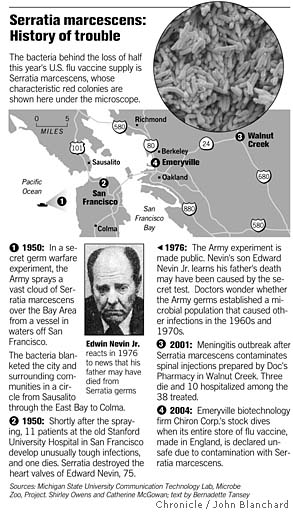
Sep 20, 1950 – Sep 27, 1950
If you think the current pandemic is some devious plan to take out Black folks, you are way out of the loop.
The US Govt has been up to its shenanagins with the general US population for decades.
Overview
Operation Sea-Spray was a 1950 U.S. Navy secret biological warfare experiment in which Serratia marcescens and Bacillus globigii bacteria were sprayed over the San Francisco Bay Area in California, in order to determine how vulnerable a city like San Francisco may be to a bioweapon attack.
In 1950, the U.S. Released a Bioweapon in San Francisco
This was one of hundreds of bioweapon simulations carried out in the 1950s and 1960s
Helen Thompson
July 6, 2015

In 1950, the U.S. Released a Bioweapon in San Francisco
This was one of hundreds of bioweapon simulations carried out in the 1950s and 1960s
The bacterium Serratia marcescens lives in soil and water, and is best known for its ability to produce bright red pigment. This flashy trait makes this particular microbe useful in experiments—because it is so bright, it's easy to see where it is. And in 1950, the U.S. military harnessed that power in a large-scale biowarefare test, writes Rebecca Kreston on her blog “Body Horrors” for Scientific American.
Beginning on September 26, 1950, the crew of a U.S. Navy minesweeper ship spent six days spraying Serratia marcescens into the air about two miles off the northern California coast. The project was called “Operation Sea Spray,” and its aim was to determine the susceptibility of a big city like San Francisco to a bioweapon attack by terrorists.
In the following days, the military took samples at 43 sites to track the bacteria's spread, and found that it had quickly infested not only the city but surrounding suburbs as well. During the test, residents of these areas would have inhaled millions of bacterial spores. Clearly, their test showed, San Francisco and cities with similar size and topography could face germ warfare threats. “In this regard, the experiment was a success,” writes Kreston.
But there was a catch. At the time, the US military thought that Serratia couldn’t harm humans. The bug was mostly known for the red spots it produced on infested foods and had not been widely linked to clinical conditions. That changed when one week after the test, 11 local residents checked into a Stanford University Hospital complaining of urinary tract infections.
Upon testing their pee, doctors noticed that the pathogen had a red hue. “Infection with Serratia was so rare that the outbreak was extensively investigated by the University to identify the origins of this scarlet letter bug,” writes Kreston. After scientists identified the microbe, the cases collectively became the first recorded outbreak of Serratia marcescens. One patient, a man named Edward Nevin who was recovering from prostate surgery, died, and some have suggested that the release forever changed the area's microbial ecology, as Bernadette Tansey pointed out for the San Francisco Chronicle in 2004.
The military had performed similar tests in other cities across the country over the next two decades, until Richard Nixon halted all germ warfare research in 1969. The San Francisco experiment didn’t become public knowledge until 1976.
Click Above LInk To Access Links For More Information

U.S. Army Report Details Germ War Exercise In N.Y. Subway in '66
By George Lardner and Jr.
April 22, 1980
Army scientists sprayed "harmless" bacteria directly onto New York subway riders in a 1966 test throughout downtown and midtown Manhattan, according to a Defense Department report made public yesterday.
The commuters paid little attention, the Army said in the study, which concluded that subway systems were ripe targets for "covert biological attack."
Details of the experiment, previously disclosed only in broad outline, were contained in a 71-page report of the Army's Special Operations Division at Fort Detrick, Md. It was released under the Freedom of Information Act in response to a request by the Church of Scientology.
The simulated biological warfare attack in New York, conducted from June 6 to June 10, 1966, included the release of aerosol clouds of a test bacillus into stations along both the Seventh and Eighth Avenue lines.
In these trials, one of the Army's observers reported, small quantities of "a harmless simulant agent," known as "bacillus subtilis var. niger" were inserted through the sidewalk gratings, producing "aerosol clouds" that "were momentarily visible in the station" below.
"When the cloud engulfed people." the observer continued, "they brushed their clothing, looked up at the grating and walked on."
The whoosh of the trains carried the stuff uptown and downtown within a few minutes, the report said. Even more effective, the Army found, was dumping bigger doees in subway tunnels, where light bulbs containing the bacillus were tossed from moving trains.
The tests were conducted without the knowledge of either New York police or the New York City Transit Authority, but the Army's personnel went virtually unchallenged despite their assiduous collection of air samples with portable pumps and other devices.
The closest call, according to the study, came when one of the Army's operatives from Maryland walked into a station smoking a cigarette.Challenged by a police officer, he said he was from out of state and produced a phony letter saying he was employed by an industrial research organization. Copies had been given to all test personnel "as a cover in case they were questioned," the report notes.
According to the report, which cited the existence of subways in the Soviet Union, Europe and South America as well as the United States, the tests were conducted not only to assess the vulnerability of subway systems to covert biological attack, but also to determine "methods of delivery that could be used offensively."
Emphasizing the rapid spread of the test bacillus from the lightbulbs, which were also tossed along the Lexington Avenue line, the study found:
"Dropping an agent package to the roadbed from a rapidly moving train is an easy and effective method for covert contamination of a segment of a subway line with a biological agent. . . . [It] is aerosolized and dispersed rapidly by the movement of trains, penetrating stations and trains in the area and persisting there for one hour or longer."
The Army concluded: "Simultaneous or near-simultaneous deposit of a pathogenic agent in one or more locations in each of the several subway lines operating in midtown Manhattan at a peak workday traffic period would expose a large number of people to infection and cause high casualties among the population working in the area."


By George Lardner and Jr.
April 22, 1980
Army scientists sprayed "harmless" bacteria directly onto New York subway riders in a 1966 test throughout downtown and midtown Manhattan, according to a Defense Department report made public yesterday.
The commuters paid little attention, the Army said in the study, which concluded that subway systems were ripe targets for "covert biological attack."
Details of the experiment, previously disclosed only in broad outline, were contained in a 71-page report of the Army's Special Operations Division at Fort Detrick, Md. It was released under the Freedom of Information Act in response to a request by the Church of Scientology.
The simulated biological warfare attack in New York, conducted from June 6 to June 10, 1966, included the release of aerosol clouds of a test bacillus into stations along both the Seventh and Eighth Avenue lines.
In these trials, one of the Army's observers reported, small quantities of "a harmless simulant agent," known as "bacillus subtilis var. niger" were inserted through the sidewalk gratings, producing "aerosol clouds" that "were momentarily visible in the station" below.
"When the cloud engulfed people." the observer continued, "they brushed their clothing, looked up at the grating and walked on."
The whoosh of the trains carried the stuff uptown and downtown within a few minutes, the report said. Even more effective, the Army found, was dumping bigger doees in subway tunnels, where light bulbs containing the bacillus were tossed from moving trains.
The tests were conducted without the knowledge of either New York police or the New York City Transit Authority, but the Army's personnel went virtually unchallenged despite their assiduous collection of air samples with portable pumps and other devices.
The closest call, according to the study, came when one of the Army's operatives from Maryland walked into a station smoking a cigarette.Challenged by a police officer, he said he was from out of state and produced a phony letter saying he was employed by an industrial research organization. Copies had been given to all test personnel "as a cover in case they were questioned," the report notes.
According to the report, which cited the existence of subways in the Soviet Union, Europe and South America as well as the United States, the tests were conducted not only to assess the vulnerability of subway systems to covert biological attack, but also to determine "methods of delivery that could be used offensively."
Emphasizing the rapid spread of the test bacillus from the lightbulbs, which were also tossed along the Lexington Avenue line, the study found:
"Dropping an agent package to the roadbed from a rapidly moving train is an easy and effective method for covert contamination of a segment of a subway line with a biological agent. . . . [It] is aerosolized and dispersed rapidly by the movement of trains, penetrating stations and trains in the area and persisting there for one hour or longer."
The Army concluded: "Simultaneous or near-simultaneous deposit of a pathogenic agent in one or more locations in each of the several subway lines operating in midtown Manhattan at a peak workday traffic period would expose a large number of people to infection and cause high casualties among the population working in the area."


Dead Hand
aka Perimeter
With what is going on in Ukraine with Russia, if you are a hardcore conspiracy theorist, you may have heard chatter on the Russian Doomsday system called “Dead Hand”.
The system supposedly went online in the mid 1980s. That’s when the US found out about it. It’s unclear even today if it had been put online earlier.
When the Soviet Union collapsed in the early 1990s, Russia assured Western Nations that the system was deactivated. Nobody could confirm and if you know the history of Russia, you can’t believe anything they say.
There have been theories that Putin has upgraded it over the past 20 years. No one knows if it’s in operation or it’s capabilities.
Russia's 'Dead Hand' Is a Soviet-Built Nuclear Doomsday Device
Military.com
By Blake Stilwell
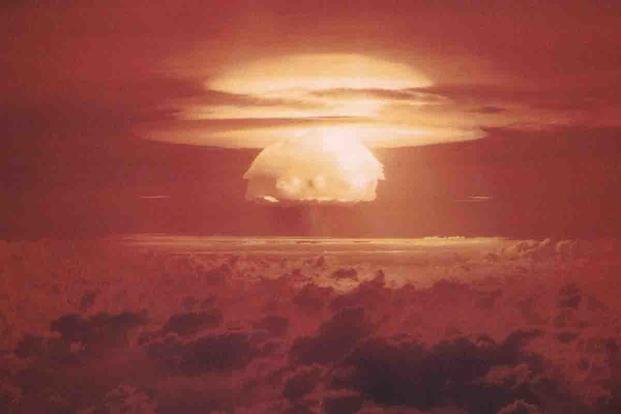
 www.military.com
www.military.com
A lot of great technology was developed during the Cold War. Things like GPS, the internet and microchips were all developed as part of the arms-race tech boom. Unfortunately, so was the Novichok nerve agent, the world's largest nuclear weapon and Russia's doomsday device, just to name a few.
You read that right. Like something out of one of the worst James Bond movies, the Soviet Union developed a world-ending mechanism that would launch all of its nuclear weapons without any command from an actual human.
Russia currently has an estimated 1,600 deployed tactical nuclear weapons, with another 2,400 strategic nuclear weapons tied to intercontinental ballistic missiles. This makes Russia the largest nuclear power in the world. All of these weapons are tied into the Perimeter, an automatic nuclear weapons control system.
In a crisis that might mean a first strike from the United States, high-ranking government officials or military commanders could activate the Perimeter. Perimeter would guarantee that the Soviet Union (and now, Russia) could respond even if its entire armed forces were wiped out.
Once switched on, the Perimeter system can launch the entire Russian nuclear arsenal in response to a nuclear attack. It was part of the Cold War doctrine of mutually assured destruction, a means of deterring nuclear attacks by ensuring the side who initiated a first strike also would be annihilated.
Called "Dead Hand" in the West, the theory is that a command and control system measures communications on military frequencies, radiation levels, air pressure, heat and short-term seismic disturbances. If the measurement points to a nuclear attack, the Perimeter begins a sequence that would end in the firing of all ICBMs in the Soviet (now, Russian) arsenal.
Perimeter would launch a command rocket, tipped with a radio warhead that transmits launch orders to Russian nuclear silos, even with the presence of radio jamming. The rocket would fly across the entire length of the country. After a number of test launches to prove the viability of such a command rocket, the Perimeter system went online in 1985.
The Soviet Union never confirmed that such a system ever existed, but Russian Strategic Missile Forces Gen. Sergey Karakaev confirmed it to a Russian newspaper in 2011, saying the U.S. could be destroyed in 30 minutes. Russian state media outlets suggest the system was upgraded to include radar early warning systems and Russia's new hypersonic missiles.
In the United States, similar technologies were developed. Seismic and radiation sensors are used to monitor parts of the U.S. and the world for nuclear explosions and other activity, but the U.S. military never created an automatic trigger for its arsenal. Instead, it ensured that American humans with the ability and authority to launch a second strike would survive a first strike.
Since the Perimeter is reportedly still active, the danger of an automatic, computer-generated nuclear strike still exists. Now that Russian President Vladimir Putin has put Russia's nuclear weapons on high alert, he might have taken Russia's doomsday device on notice as well.
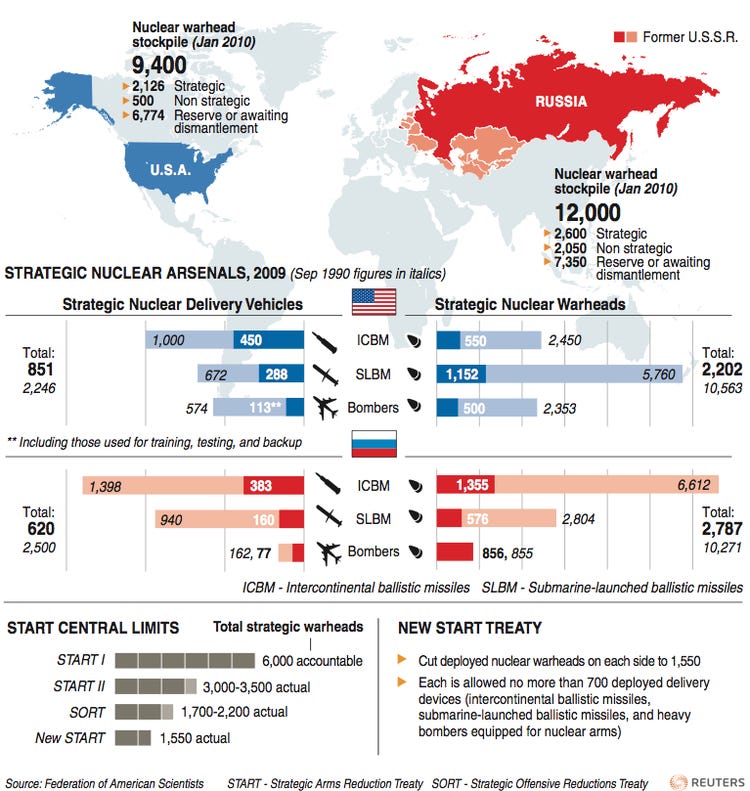
aka Perimeter
With what is going on in Ukraine with Russia, if you are a hardcore conspiracy theorist, you may have heard chatter on the Russian Doomsday system called “Dead Hand”.
The system supposedly went online in the mid 1980s. That’s when the US found out about it. It’s unclear even today if it had been put online earlier.
When the Soviet Union collapsed in the early 1990s, Russia assured Western Nations that the system was deactivated. Nobody could confirm and if you know the history of Russia, you can’t believe anything they say.
There have been theories that Putin has upgraded it over the past 20 years. No one knows if it’s in operation or it’s capabilities.
Russia's 'Dead Hand' Is a Soviet-Built Nuclear Doomsday Device
Military.com
By Blake Stilwell

Russia's 'Dead Hand' Is a Soviet-Built Nuclear Doomsday Device
Even if Russia was completely defeated in a nuclear war, it's not.
A lot of great technology was developed during the Cold War. Things like GPS, the internet and microchips were all developed as part of the arms-race tech boom. Unfortunately, so was the Novichok nerve agent, the world's largest nuclear weapon and Russia's doomsday device, just to name a few.
You read that right. Like something out of one of the worst James Bond movies, the Soviet Union developed a world-ending mechanism that would launch all of its nuclear weapons without any command from an actual human.
Russia currently has an estimated 1,600 deployed tactical nuclear weapons, with another 2,400 strategic nuclear weapons tied to intercontinental ballistic missiles. This makes Russia the largest nuclear power in the world. All of these weapons are tied into the Perimeter, an automatic nuclear weapons control system.
In a crisis that might mean a first strike from the United States, high-ranking government officials or military commanders could activate the Perimeter. Perimeter would guarantee that the Soviet Union (and now, Russia) could respond even if its entire armed forces were wiped out.
Once switched on, the Perimeter system can launch the entire Russian nuclear arsenal in response to a nuclear attack. It was part of the Cold War doctrine of mutually assured destruction, a means of deterring nuclear attacks by ensuring the side who initiated a first strike also would be annihilated.
Called "Dead Hand" in the West, the theory is that a command and control system measures communications on military frequencies, radiation levels, air pressure, heat and short-term seismic disturbances. If the measurement points to a nuclear attack, the Perimeter begins a sequence that would end in the firing of all ICBMs in the Soviet (now, Russian) arsenal.
Perimeter would launch a command rocket, tipped with a radio warhead that transmits launch orders to Russian nuclear silos, even with the presence of radio jamming. The rocket would fly across the entire length of the country. After a number of test launches to prove the viability of such a command rocket, the Perimeter system went online in 1985.
The Soviet Union never confirmed that such a system ever existed, but Russian Strategic Missile Forces Gen. Sergey Karakaev confirmed it to a Russian newspaper in 2011, saying the U.S. could be destroyed in 30 minutes. Russian state media outlets suggest the system was upgraded to include radar early warning systems and Russia's new hypersonic missiles.
In the United States, similar technologies were developed. Seismic and radiation sensors are used to monitor parts of the U.S. and the world for nuclear explosions and other activity, but the U.S. military never created an automatic trigger for its arsenal. Instead, it ensured that American humans with the ability and authority to launch a second strike would survive a first strike.
Since the Perimeter is reportedly still active, the danger of an automatic, computer-generated nuclear strike still exists. Now that Russian President Vladimir Putin has put Russia's nuclear weapons on high alert, he might have taken Russia's doomsday device on notice as well.
ERUV
Is this strictly for religious purposes….or is it part of the Jewmanti’s sinister, evil plan on world domination?
There are eruvin in more than 30 states in the U.S., but Manhattan's is one of the longest in the world. A nearly invisible wire runs from 126th Street in Harlem, down to Battery Park and back up to 111th along the East River. The line has been in place, in some form or another, for just over a century.
A Fishing Line Encircles Manhattan, Protecting Sanctity Of Sabbath
Monique LaBorde
May 13, 20194:25 PM ET
A clear fishing wire is tied around the island of Manhattan. It's attached to posts around the perimeter of the city, from First Street to 126th. This string is part of an eruv, a Jewish symbolic enclosure. Most people walking on the streets of Manhattan do not notice it at all. But many observant Jews in Manhattan rely on this string to leave the house on the Sabbath.
The concept of the eruv was first established almost 2,000 years ago to allow Jews to more realistically follow the laws of Sabbath rest, particularly one — no carrying on the Sabbath.
According to the laws of Sabbath rest, nothing can be carried from the domestic zone into the public zone on Saturday. That means no carrying house keys or a wallet. It also means no pushing a baby stroller. For parents of young children, no carrying would mean not leaving the house on Saturday.
The eruv symbolically extends the domestic zone into the public zone, permitting activities within it that would normally be forbidden to observant Jews on the Sabbath.
Imagine a whole day cooped up in a Manhattan apartment with a toddler and no electricity. "You might be going a little bonkers because your apartment is so small," says Dina Mann. "But you don't realize it's so small until you're stuck in there and you can't go anywhere."
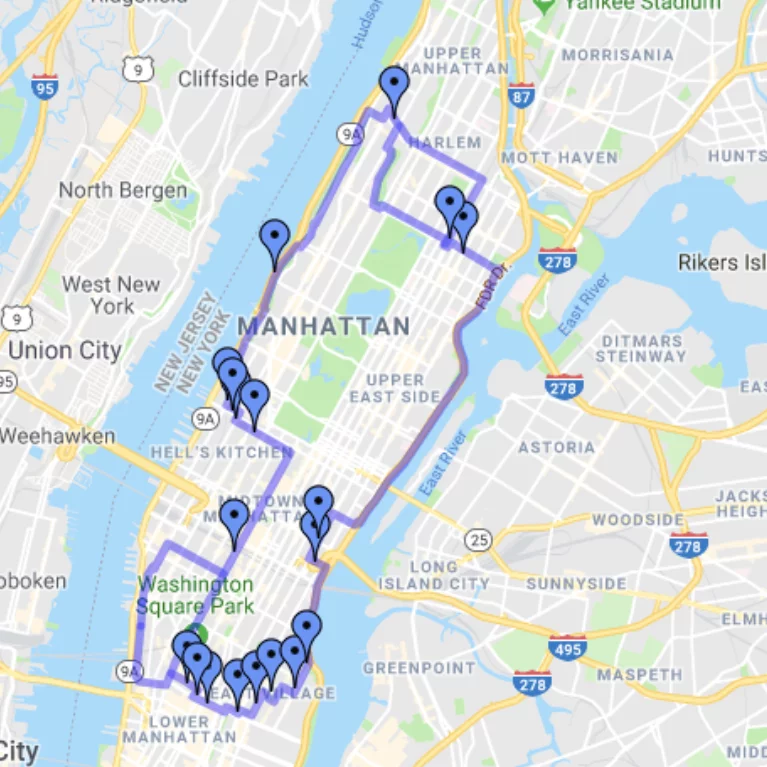
The Jewish Center in Manhattan maintains an interactive Google Map marking the boundary of the eruv.
Mann lives on Manhattan's Upper West Side with her husband and two young children. They observe Sabbath rest, including refraining from carrying. She says, "If you're really really really strict, then you would not even pick up your child."
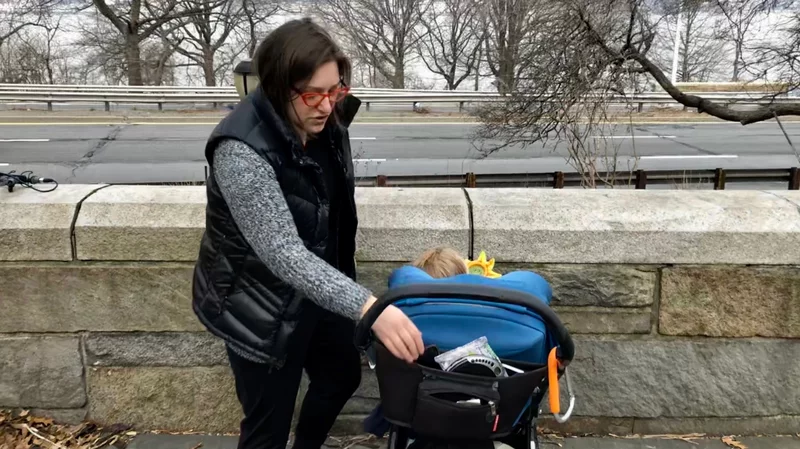
Dina Mann and her son walk in Riverside Park. The eruv boundary runs directly behind her.
Mann and many others rely on the eruv every Saturday to leave the apartment with their children. Luckily, Manhattan's eruv has never been down. Rabbi Mintz, co-president of the Manhattan eruv, says: "It has never been down for a Sabbath. Never. We always save it at the last minute." Mintz noted that the Macy's Thanksgiving Day parade is always a particularly trying time.
More than 200 cities around the world are partially encircled by an eruv. Manhattan's certainly isn't the largest, but according to Mintz, it's the most expensive eruv in the world. It costs between $125,000 and $150,000 a year to maintain. Mintz helps raise the funds every year from synagogues and private donations.
Every Thursday before dawn, a rabbi drives the perimeter, checking to see if wind or a fallen branch has broken the line. There are usually a few breaks, so a construction company is called and the rabbi gets in a cherry picker with fishing line in hand to repair the eruv. That's the part that costs so much.
As it turns out, resting on the Sabbath takes a lot of preparation. Dina Mann says the eruv does more than just help her enjoy a Saturday walk in Central Park — it lets her enjoy the Sabbath. "There'a a warmth in the house the minute you light the candles," she says, "because you're rushing, rushing, rushing, making sure all the lights are on, making sure the candles are in there, making sure all the food is cooked. ... Then you just light the candles and just like let go of everything."
Most important of all, the eruv allows her to rest from worry.
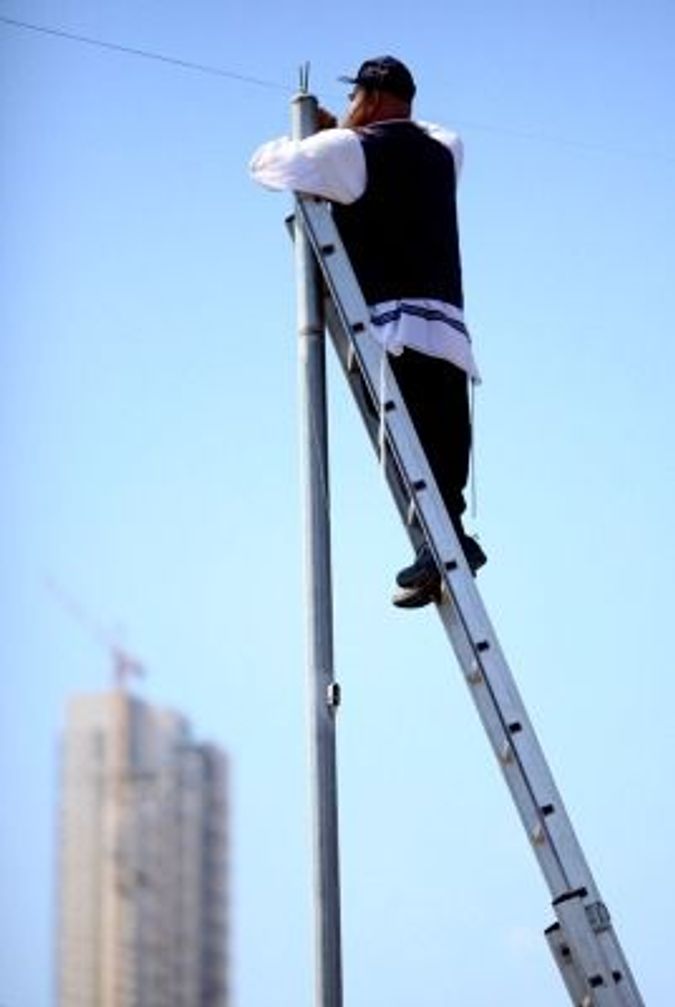
Is this strictly for religious purposes….or is it part of the Jewmanti’s sinister, evil plan on world domination?
There are eruvin in more than 30 states in the U.S., but Manhattan's is one of the longest in the world. A nearly invisible wire runs from 126th Street in Harlem, down to Battery Park and back up to 111th along the East River. The line has been in place, in some form or another, for just over a century.
A Fishing Line Encircles Manhattan, Protecting Sanctity Of Sabbath
Monique LaBorde
May 13, 20194:25 PM ET
A clear fishing wire is tied around the island of Manhattan. It's attached to posts around the perimeter of the city, from First Street to 126th. This string is part of an eruv, a Jewish symbolic enclosure. Most people walking on the streets of Manhattan do not notice it at all. But many observant Jews in Manhattan rely on this string to leave the house on the Sabbath.
The concept of the eruv was first established almost 2,000 years ago to allow Jews to more realistically follow the laws of Sabbath rest, particularly one — no carrying on the Sabbath.
According to the laws of Sabbath rest, nothing can be carried from the domestic zone into the public zone on Saturday. That means no carrying house keys or a wallet. It also means no pushing a baby stroller. For parents of young children, no carrying would mean not leaving the house on Saturday.
The eruv symbolically extends the domestic zone into the public zone, permitting activities within it that would normally be forbidden to observant Jews on the Sabbath.
Imagine a whole day cooped up in a Manhattan apartment with a toddler and no electricity. "You might be going a little bonkers because your apartment is so small," says Dina Mann. "But you don't realize it's so small until you're stuck in there and you can't go anywhere."

The Jewish Center in Manhattan maintains an interactive Google Map marking the boundary of the eruv.
Mann lives on Manhattan's Upper West Side with her husband and two young children. They observe Sabbath rest, including refraining from carrying. She says, "If you're really really really strict, then you would not even pick up your child."

Dina Mann and her son walk in Riverside Park. The eruv boundary runs directly behind her.
Mann and many others rely on the eruv every Saturday to leave the apartment with their children. Luckily, Manhattan's eruv has never been down. Rabbi Mintz, co-president of the Manhattan eruv, says: "It has never been down for a Sabbath. Never. We always save it at the last minute." Mintz noted that the Macy's Thanksgiving Day parade is always a particularly trying time.
More than 200 cities around the world are partially encircled by an eruv. Manhattan's certainly isn't the largest, but according to Mintz, it's the most expensive eruv in the world. It costs between $125,000 and $150,000 a year to maintain. Mintz helps raise the funds every year from synagogues and private donations.
Every Thursday before dawn, a rabbi drives the perimeter, checking to see if wind or a fallen branch has broken the line. There are usually a few breaks, so a construction company is called and the rabbi gets in a cherry picker with fishing line in hand to repair the eruv. That's the part that costs so much.
As it turns out, resting on the Sabbath takes a lot of preparation. Dina Mann says the eruv does more than just help her enjoy a Saturday walk in Central Park — it lets her enjoy the Sabbath. "There'a a warmth in the house the minute you light the candles," she says, "because you're rushing, rushing, rushing, making sure all the lights are on, making sure the candles are in there, making sure all the food is cooked. ... Then you just light the candles and just like let go of everything."
Most important of all, the eruv allows her to rest from worry.

Area 6
You know Area 51, but just what in the world is Area 6?
By KEITH ROGERS
LAS VEGAS REVIEW-JOURNAL
March 5, 2016 - 3:24 pm
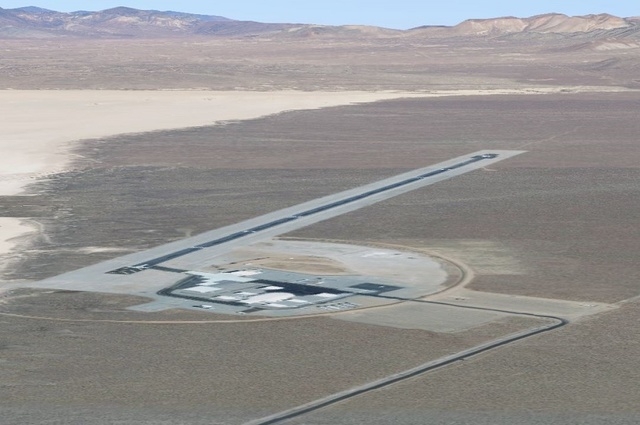
 www.reviewjournal.com
www.reviewjournal.com
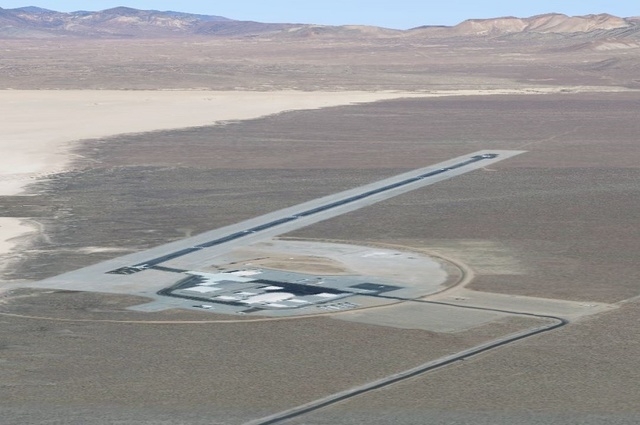
The asphalt runway stretches for a mile on Yucca Flat, deep in the Nevada National Security Site about 80 miles northwest of Las Vegas.
Built in 2005, the runway covers a dirt landing strip from the 1950s, when the wide, flat valley was used for atomic bomb test shots. A small complex of buildings dominated by a large hangar with unusual clamshell doors dominates the southern end of the asphalt strip.
The complex has no official name. Not many people even know it’s there.
As secret airbases go, the single runway in the test site’s Area 6 is easily overshadowed by the world’s most famous secret military base, Area 51, a dozen miles northeast. Area 51’s existence was only recently acknowledged, even after decades of speculation by UFO enthusiasts that the aircraft development and test facility also houses space aliens and extraterrestrial technology.
Unlike Area 51, which is protected by shoot-to-kill security and shielded from outside view by mountain ranges, Area 6 has only fences and visitor checkpoints. It can be seen at a distance from tour buses on the highway to historic bomb craters at the northern end of Yucca Flat.
But exactly what goes on at the much smaller and much newer Area 6 is still top-secret defense research-and-development work. It’s so hush-hush that the security site’s spokesman can say little about it.
Darwin Morgan, a spokesman for the National Nuclear Security Administration, said the low-key Area 6 facilities have been used by the Defense and Homeland Security departments.
“They come here to test their own sensors,” he recently said after spending months fending off questions about the Area 6 runway from the Review-Journal.
Other than a few “Above Top Secret” forum posts from 2009, and a Wikipedia blurb that cites a 2011 Flightglobal story saying the runway is part of an unmanned aerial vehicle test facility, little has been written about the Area 6 runway.
Flightglobal, an aviation industry website, noted a five-sentence description of the Area 6 “aerial operations facility” found in a 7,500-page safety report on the proposed Yucca Mountain nuclear waste project.
“The purpose of this facility is to construct, operate, and test a variety of unmanned aerial vehicles. Tests include, but are not limited to, airframe modifications, sensor operation, and onboard computer development. A small, manned chase plane is used to track the unmanned aerial vehicles,” reads the report Energy Department contractor Bechtel SAIC prepared in 2008 for the Yucca Mountain repository license application.
The National Nuclear Security Administration is a semi-autonomous branch of the Energy Department. Its Nevada field office, based in North Las Vegas, runs the security site.
What it costs to operate Area 6 is difficult to determine. Funding is buried in the Nevada field office’s Strategic Partnership Program, which was part of the $84 million budgeted for the entire security site in fiscal year 2015. Program funding was about 13.5 percent of the field office’s $622 million total budget that year.
The program’s activities include research and development of sensors for detecting explosive materials, deadly gases and chemicals, and radioactive sources that could be used in “dirty bombs.”
Biological weapon sources aren’t allowed at the security site, according to its environmental impact statement.
Portable radiation monitors and some sensors used in airports and at ports of entry have evolved from the program.
Morgan said agencies in the Strategic Partnership Program take advantage of the security site’s restricted airspace to test sensor-equipped aircraft work without public interference or spying from space.
“We have controlled airspace and that gives them opportunities to test various types of platforms,” he said.
Most of the strategic partnership money comes from Defense Department branches: the Air Force, Army, Navy, Marines, Defense Threat Reduction Agency and the Defense Advanced Research Projects Agency.
“We do a wide variety of work for others … supporting people with sensor development activities,” Morgan said. “It evolved from the nuclear testing program. We had to have very good sensors to collect data in a split second before they were obliterated.”
Morgan said the Area 6 runway and its apron were built by Bechtel Nevada, the site’s management and operations contractor at the time, at a cost of $9.6 million. The buildings were constructed over several years, and cost figures aren’t immediately available.
As seen from above on Google Earth, the complex is dominated by the clamshell-door hangar and four smaller outbuildings connected by what appear to be covered walkways. Two smaller modern hangars and an older one used during atomic test days round out the facility. Morgan said antennas were installed to allow ground operators to control the flight of unmanned aerial system aircraft.
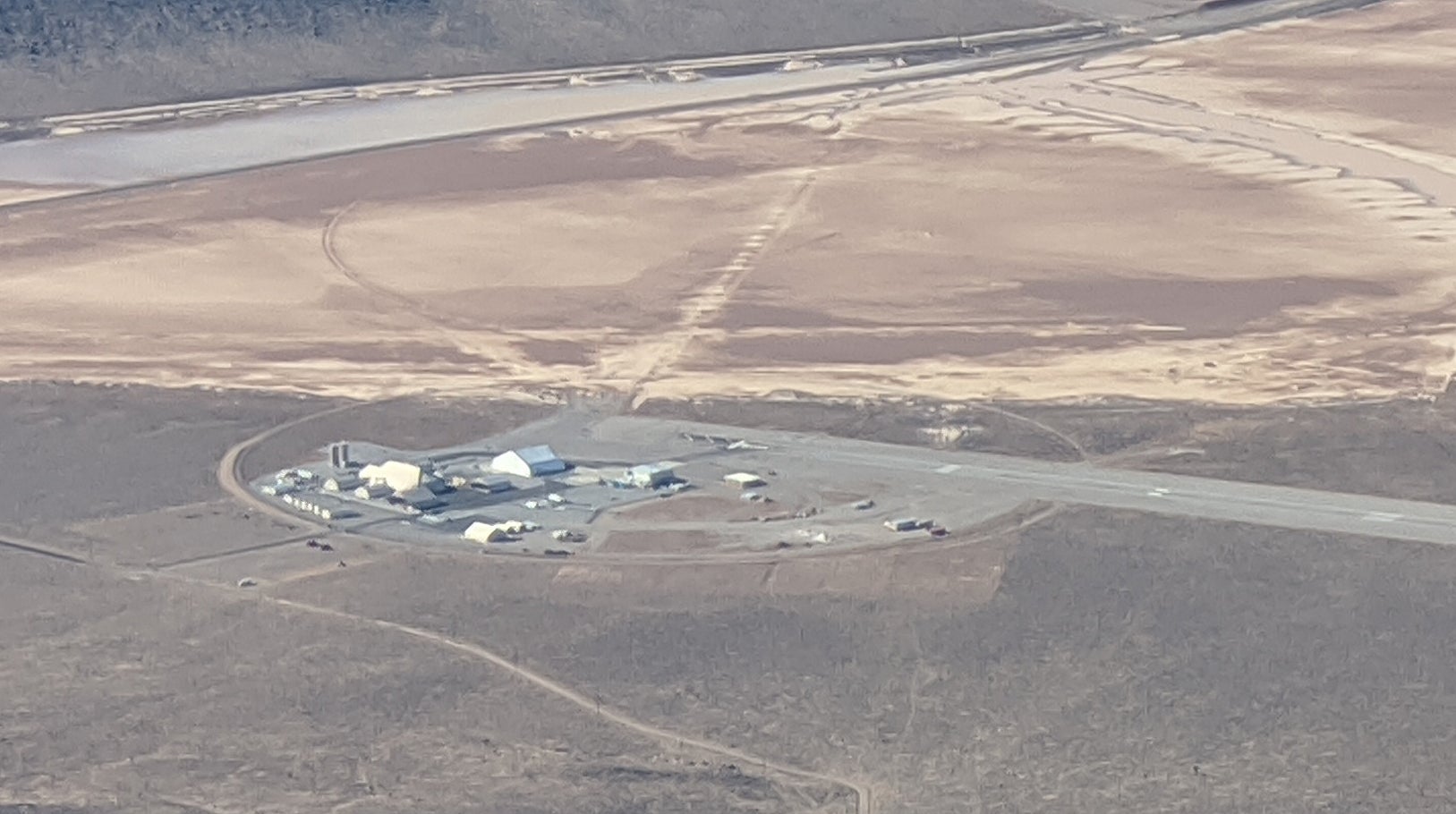
LOOKING FOR ‘EVILDOERS’
The National Nuclear Security Administration has kept Area 6 so low profile that even defense industry experts were unaware of it.
“I had not heard about it,” said John Pike, director of GlobalSecurity.org, an Alexandria, Va.-based defense information website.
But Pike’s associate, imagery analyst Tim Brown, has estimated the hangar complex could hold about 15 MQ-9 Reaper remotely piloted spy planes.
Pike said the length of the runway suggests Area 6 is used for small planes or remotely piloted aircraft such as Predator and Reaper reconnaissance drones.
Bigger spy planes, such as the jet-powered RQ-170 Sentinel unmanned aircraft system, are flown from the Tonopah Test Range by the 30th Reconnaissance Squadron assigned to a Creech Air Force Base wing. It’s unclear if the Sentinel or smaller versions would be flown from Area 6, but Pike said the runway is too small for large jets and bombers. Takeoffs and landings would be tight for an F-16, for example, and an F-15 would need an even longer strip for safe maneuvers.
Pike said aircraft likely in use at Area 6 are best suited for surveillance of hidden targets, weapons or personnel on the ground, particularly in sparsely populated areas. The security site’s high-desert terrain is similar to what might be found in the “boondocks” of Libya, he noted.
“There is a well-founded fear that evildoers are stalking around out there — ISIS and al-Qaida,” he said of Libya. “You have to imagine that trying to develop targeting signatures in this type of mountainous desert terrain. That’s got to be a really high priority … not constrained by funding.”
“I can’t think about a better place to do it where you wouldn’t have civilians stumbling on what you’re doing,” he said in reference to the security site.
So what would stray civilians see if they could stumble in?
Pike offers an educated guess: Sensor arrays made up of more than 350 smartphone cameras mounted on an MQ-9 Reaper that can record and archive movements of people and vehicles over an area of about 40 square miles.
It is known in the unmanned aerial vehicle community as the “Gorgon Stare,” derived from Gorgon monsters of Greek mythology whose gaze was so dreadful it was said to turn a person into stone. While the sensors can’t do that, they can keep terrorist targets from evading the sights of U.S. weapons.
According to the Defense Advanced Research Projects Agency website, sensor development has soared to new heights under ARGUS, or the Autonomous Real-time Ground Ubiquitous Surveillance program.
The goal is to “provide at least 130 independently steerable video streams to enable real-time tracking of individual targets throughout the field of view. The ARGUS-IR system will also provide continuous updates of the entire field of view for enhanced situational awareness,” the defense tech agency website says.
Pike said improving ARGUS and similar sensor capabilities might be among the activities taking place at Area 6.
“The thing you get with ARGUS is time-lapse photography. If there’s a rock out there that’s moving, maybe that’s a rock you ought to be paying attention to. Maybe it has to do with evildoers,” he said.
“I would assume they have airplanes and UAVs (unmanned aerial vehicles) they’re flying around out there to see what they can see,” Pike said.
“If they would let me run the thing, I’d tell (special operation troops) to go out and do the best in terms of infiltration,” he said. “Then turn loose the sensors and see if we could find them, play hide-and-seek.”
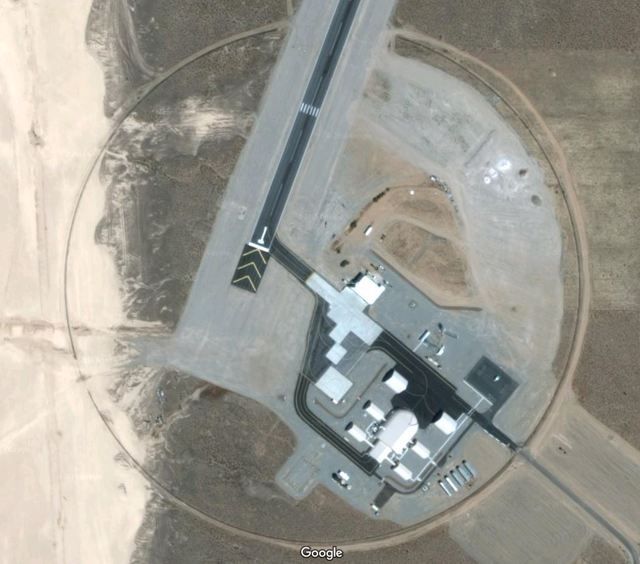
You know Area 51, but just what in the world is Area 6?
By KEITH ROGERS
LAS VEGAS REVIEW-JOURNAL
March 5, 2016 - 3:24 pm

You know Area 51, but just what in the world is Area 6?
The asphalt runway stretches for a mile on Yucca Flat, deep in the Nevada National Security Site about 80 miles northwest of Las Vegas.

The asphalt runway stretches for a mile on Yucca Flat, deep in the Nevada National Security Site about 80 miles northwest of Las Vegas.
Built in 2005, the runway covers a dirt landing strip from the 1950s, when the wide, flat valley was used for atomic bomb test shots. A small complex of buildings dominated by a large hangar with unusual clamshell doors dominates the southern end of the asphalt strip.
The complex has no official name. Not many people even know it’s there.
As secret airbases go, the single runway in the test site’s Area 6 is easily overshadowed by the world’s most famous secret military base, Area 51, a dozen miles northeast. Area 51’s existence was only recently acknowledged, even after decades of speculation by UFO enthusiasts that the aircraft development and test facility also houses space aliens and extraterrestrial technology.
Unlike Area 51, which is protected by shoot-to-kill security and shielded from outside view by mountain ranges, Area 6 has only fences and visitor checkpoints. It can be seen at a distance from tour buses on the highway to historic bomb craters at the northern end of Yucca Flat.
But exactly what goes on at the much smaller and much newer Area 6 is still top-secret defense research-and-development work. It’s so hush-hush that the security site’s spokesman can say little about it.
Darwin Morgan, a spokesman for the National Nuclear Security Administration, said the low-key Area 6 facilities have been used by the Defense and Homeland Security departments.
“They come here to test their own sensors,” he recently said after spending months fending off questions about the Area 6 runway from the Review-Journal.
Other than a few “Above Top Secret” forum posts from 2009, and a Wikipedia blurb that cites a 2011 Flightglobal story saying the runway is part of an unmanned aerial vehicle test facility, little has been written about the Area 6 runway.
Flightglobal, an aviation industry website, noted a five-sentence description of the Area 6 “aerial operations facility” found in a 7,500-page safety report on the proposed Yucca Mountain nuclear waste project.
“The purpose of this facility is to construct, operate, and test a variety of unmanned aerial vehicles. Tests include, but are not limited to, airframe modifications, sensor operation, and onboard computer development. A small, manned chase plane is used to track the unmanned aerial vehicles,” reads the report Energy Department contractor Bechtel SAIC prepared in 2008 for the Yucca Mountain repository license application.
The National Nuclear Security Administration is a semi-autonomous branch of the Energy Department. Its Nevada field office, based in North Las Vegas, runs the security site.
What it costs to operate Area 6 is difficult to determine. Funding is buried in the Nevada field office’s Strategic Partnership Program, which was part of the $84 million budgeted for the entire security site in fiscal year 2015. Program funding was about 13.5 percent of the field office’s $622 million total budget that year.
The program’s activities include research and development of sensors for detecting explosive materials, deadly gases and chemicals, and radioactive sources that could be used in “dirty bombs.”
Biological weapon sources aren’t allowed at the security site, according to its environmental impact statement.
Portable radiation monitors and some sensors used in airports and at ports of entry have evolved from the program.
Morgan said agencies in the Strategic Partnership Program take advantage of the security site’s restricted airspace to test sensor-equipped aircraft work without public interference or spying from space.
“We have controlled airspace and that gives them opportunities to test various types of platforms,” he said.
Most of the strategic partnership money comes from Defense Department branches: the Air Force, Army, Navy, Marines, Defense Threat Reduction Agency and the Defense Advanced Research Projects Agency.
“We do a wide variety of work for others … supporting people with sensor development activities,” Morgan said. “It evolved from the nuclear testing program. We had to have very good sensors to collect data in a split second before they were obliterated.”
Morgan said the Area 6 runway and its apron were built by Bechtel Nevada, the site’s management and operations contractor at the time, at a cost of $9.6 million. The buildings were constructed over several years, and cost figures aren’t immediately available.
As seen from above on Google Earth, the complex is dominated by the clamshell-door hangar and four smaller outbuildings connected by what appear to be covered walkways. Two smaller modern hangars and an older one used during atomic test days round out the facility. Morgan said antennas were installed to allow ground operators to control the flight of unmanned aerial system aircraft.

LOOKING FOR ‘EVILDOERS’
The National Nuclear Security Administration has kept Area 6 so low profile that even defense industry experts were unaware of it.
“I had not heard about it,” said John Pike, director of GlobalSecurity.org, an Alexandria, Va.-based defense information website.
But Pike’s associate, imagery analyst Tim Brown, has estimated the hangar complex could hold about 15 MQ-9 Reaper remotely piloted spy planes.
Pike said the length of the runway suggests Area 6 is used for small planes or remotely piloted aircraft such as Predator and Reaper reconnaissance drones.
Bigger spy planes, such as the jet-powered RQ-170 Sentinel unmanned aircraft system, are flown from the Tonopah Test Range by the 30th Reconnaissance Squadron assigned to a Creech Air Force Base wing. It’s unclear if the Sentinel or smaller versions would be flown from Area 6, but Pike said the runway is too small for large jets and bombers. Takeoffs and landings would be tight for an F-16, for example, and an F-15 would need an even longer strip for safe maneuvers.
Pike said aircraft likely in use at Area 6 are best suited for surveillance of hidden targets, weapons or personnel on the ground, particularly in sparsely populated areas. The security site’s high-desert terrain is similar to what might be found in the “boondocks” of Libya, he noted.
“There is a well-founded fear that evildoers are stalking around out there — ISIS and al-Qaida,” he said of Libya. “You have to imagine that trying to develop targeting signatures in this type of mountainous desert terrain. That’s got to be a really high priority … not constrained by funding.”
“I can’t think about a better place to do it where you wouldn’t have civilians stumbling on what you’re doing,” he said in reference to the security site.
So what would stray civilians see if they could stumble in?
Pike offers an educated guess: Sensor arrays made up of more than 350 smartphone cameras mounted on an MQ-9 Reaper that can record and archive movements of people and vehicles over an area of about 40 square miles.
It is known in the unmanned aerial vehicle community as the “Gorgon Stare,” derived from Gorgon monsters of Greek mythology whose gaze was so dreadful it was said to turn a person into stone. While the sensors can’t do that, they can keep terrorist targets from evading the sights of U.S. weapons.
According to the Defense Advanced Research Projects Agency website, sensor development has soared to new heights under ARGUS, or the Autonomous Real-time Ground Ubiquitous Surveillance program.
The goal is to “provide at least 130 independently steerable video streams to enable real-time tracking of individual targets throughout the field of view. The ARGUS-IR system will also provide continuous updates of the entire field of view for enhanced situational awareness,” the defense tech agency website says.
Pike said improving ARGUS and similar sensor capabilities might be among the activities taking place at Area 6.
“The thing you get with ARGUS is time-lapse photography. If there’s a rock out there that’s moving, maybe that’s a rock you ought to be paying attention to. Maybe it has to do with evildoers,” he said.
“I would assume they have airplanes and UAVs (unmanned aerial vehicles) they’re flying around out there to see what they can see,” Pike said.
“If they would let me run the thing, I’d tell (special operation troops) to go out and do the best in terms of infiltration,” he said. “Then turn loose the sensors and see if we could find them, play hide-and-seek.”

Is this just a vacation cruise?
Or is it an experimental “Snowpiercer”.
Or is it a trial run for the upcoming Global Financial Apocalyptic Collapse?
This 3-Year Cruise Will Visit 135 Countries on All 7 Continents
The epic journey departs from Istanbul in November, with sailings (including accommodations and meals) starting at $30,000 per year.
By Bailey Berg
March 06, 2023

 www.afar.com
www.afar.com
How do you pack a suitcase for a trip that includes ogling Emperor penguins in the Falkland Islands, lazing on the beach in Hawai‘i, and spending nights out in major cities like Cape Town and Beijing? It’s a question you’ll have to ask yourself if you sign up for Life at Sea Cruises’ new around-the-world itinerary.
The Florida-based Life at Sea Cruises, a spin-off of ship management company Miray Cruises, just announced a three-year cruise during which guests will sail roughly 130,000 miles, stop in 375 ports across 135 countries, and visit every continent.
The vessel will depart from Istanbul, Turkey, on November 1, 2023, before making additional stops (where passengers can also embark) in Barcelona and Miami. In the more than 1,000 days that follow, the ship will explore much of South America, Antarctica, the Caribbean, Central America, the USA (including California, Hawai‘i, Washington, and Alaska), northern Asia, the South Pacific, Australia, countries on the South China Sea and the Indian Ocean, southern and western Africa, and coastal Europe.
During that time, the sailing will deliver passengers to myriad iconic and UNESCO World Heritage sights, including the pyramids of Giza in Egypt, Machu Picchu in Peru, the Great Wall of China, Rio de Janeiro’s Christ the Redeemer statue, and India’s Taj Mahal.
While other around-the-world cruises typically spend a day or two at each port, the advantage of this much longer sailing is that it will dock for up to seven nights in some larger cities, like Shanghai and Singapore.
The cruise will take place on the MV Gemini, which can accommodate up to 1,074 passengers. Cabin sizes range from 130 square feet for interior staterooms (which include a double bed, a bathroom, and a desk) to 260 square feet for balcony suites (which have an additional living room area).
Pricing, which includes all meals, drinks (both alcoholic and nonalcoholic), laundry, Wi-Fi, gratuities, housekeeping, and port fees, starts at $90,000 and go up to $330,000 based on accommodations. There isn’t the option to do shorter legs; however, it is possible to go in on one room with family and friends and divvy up the costs with who is on the boat at any given time. The company is also offering a matchmaking scheme, where passengers co-own a cabin with another group and split time on board.
For meals, passengers can choose to dine at either of the two main restaurants, visit the café on the pool deck, or order room service. The ship’s amenities include a swimming pool, sun deck, a golf simulator, a fitness center, and a hospital staffed with healthcare providers and a dentist and outfitted with a pharmacy and medical equipment such as X-ray and ultrasound machines and defibrillators. (According to the cruise line, the medical staff “even has the capability to perform certain surgeries.”) For those who want to work from sea, there’s also a large business center (replacing a former casino) with meeting rooms, 14 office spaces, a library, and a lounge area.
In the past year, as cruisers have returned to the sea with a fervor following the pandemic pause in global sailings, cruise lines have been witnessing incredible demand for around-the-world sailings—one of Oceania Cruises’ 180-day itineraries sold out in 30 minutes last year. Life at Sea Cruises isn’t the only cruise line that has introduced the idea of a multi-year sailing. Another cruise company, Storylines, recently unveiled plans to launch a residential cruise ship, MV Narrative, that will sail indefinitely starting in 2024.







Or is it an experimental “Snowpiercer”.
Or is it a trial run for the upcoming Global Financial Apocalyptic Collapse?
This 3-Year Cruise Will Visit 135 Countries on All 7 Continents
The epic journey departs from Istanbul in November, with sailings (including accommodations and meals) starting at $30,000 per year.
By Bailey Berg
March 06, 2023

This 3-Year Cruise Will Visit 148 Countries on All 7 Continents
The epic journey departs from Istanbul in November, with sailings (including accommodations and meals) starting at $38,500 per year.
How do you pack a suitcase for a trip that includes ogling Emperor penguins in the Falkland Islands, lazing on the beach in Hawai‘i, and spending nights out in major cities like Cape Town and Beijing? It’s a question you’ll have to ask yourself if you sign up for Life at Sea Cruises’ new around-the-world itinerary.
The Florida-based Life at Sea Cruises, a spin-off of ship management company Miray Cruises, just announced a three-year cruise during which guests will sail roughly 130,000 miles, stop in 375 ports across 135 countries, and visit every continent.
The vessel will depart from Istanbul, Turkey, on November 1, 2023, before making additional stops (where passengers can also embark) in Barcelona and Miami. In the more than 1,000 days that follow, the ship will explore much of South America, Antarctica, the Caribbean, Central America, the USA (including California, Hawai‘i, Washington, and Alaska), northern Asia, the South Pacific, Australia, countries on the South China Sea and the Indian Ocean, southern and western Africa, and coastal Europe.
During that time, the sailing will deliver passengers to myriad iconic and UNESCO World Heritage sights, including the pyramids of Giza in Egypt, Machu Picchu in Peru, the Great Wall of China, Rio de Janeiro’s Christ the Redeemer statue, and India’s Taj Mahal.
While other around-the-world cruises typically spend a day or two at each port, the advantage of this much longer sailing is that it will dock for up to seven nights in some larger cities, like Shanghai and Singapore.
The cruise will take place on the MV Gemini, which can accommodate up to 1,074 passengers. Cabin sizes range from 130 square feet for interior staterooms (which include a double bed, a bathroom, and a desk) to 260 square feet for balcony suites (which have an additional living room area).
Pricing, which includes all meals, drinks (both alcoholic and nonalcoholic), laundry, Wi-Fi, gratuities, housekeeping, and port fees, starts at $90,000 and go up to $330,000 based on accommodations. There isn’t the option to do shorter legs; however, it is possible to go in on one room with family and friends and divvy up the costs with who is on the boat at any given time. The company is also offering a matchmaking scheme, where passengers co-own a cabin with another group and split time on board.
For meals, passengers can choose to dine at either of the two main restaurants, visit the café on the pool deck, or order room service. The ship’s amenities include a swimming pool, sun deck, a golf simulator, a fitness center, and a hospital staffed with healthcare providers and a dentist and outfitted with a pharmacy and medical equipment such as X-ray and ultrasound machines and defibrillators. (According to the cruise line, the medical staff “even has the capability to perform certain surgeries.”) For those who want to work from sea, there’s also a large business center (replacing a former casino) with meeting rooms, 14 office spaces, a library, and a lounge area.
In the past year, as cruisers have returned to the sea with a fervor following the pandemic pause in global sailings, cruise lines have been witnessing incredible demand for around-the-world sailings—one of Oceania Cruises’ 180-day itineraries sold out in 30 minutes last year. Life at Sea Cruises isn’t the only cruise line that has introduced the idea of a multi-year sailing. Another cruise company, Storylines, recently unveiled plans to launch a residential cruise ship, MV Narrative, that will sail indefinitely starting in 2024.





CONPLAN 8888-11
U.S. Department of Defense Plan For A Zombie Apocalypse
A U.S. Government 'Zombie' Plan?
David Sturt and Todd Nordstrom
Former Contributor
May 29, 2014,11:43am EDT

 www.forbes.com
www.forbes.com
In 2011 a plan drafted by the U.S. Government called CONPLAN 8888-11, “Counter-Zombie Dominance” was revealed to the public. The document details a strategy to defend against a zombie attack. And, yes, it’s real.
We verified that the U.S. Government did in fact publish this report. And while reading it, we discovered some truly fresh thinking. In its own way it was innovatively brilliant—especially coming from a place where we might not expect such creative thinking, the United States Government.
Creators of the tongue in cheek “Counter-Zombie Dominance” document purposely chose zombies to disrupt their own tired-out thinking. The design of the plan produced serious strategic value. It is used to help defense plan creators and trainers explore unexpected, unplanned-for threats and learn how to strategically develop defenses for any possible variable or threat.
According to the DISCLAIMER in CONPLAN 8888-11, document creators write, “This plan was not actually designed as a joke. During the summers of 2009 and 2010, while training augmentees from a local training squadron about JOPP, members of the USSTRATCOM component found out (by accident) that the hyperbole involved in writing a ‘zombie survival plan’ actually provided a very useful and effective training tool.”
Basically, planners realized that disruptive political fallout could ensue if they were to train using specific named enemies. By using zombies as the enemies, planners avoided the risk of the public assuming there was a real current threat, but more importantly they opened a new level of thinking—the fictional nature allowed planners to break out of their old mindsets.
Even more interesting was the document’s release to the public. The writers of the plan stated in the DISCLAIMER, “Our intent was to place this tool ‘into the wild’ so that others who were interested in finding new and innovative ways to train planners could have an alternative and admittedly unconventional tool at their disposal…”
Basically, planners were having a blast with the new, innovative way of thinking. And, it worked. But, should “out-of-the-box thinking” really mean “out-of-this-world thinking?”
We all have comfort zones. We all can get stuck focused on the reality and seriousness of our businesses. Playing with ideas like a zombie attack might at first seem like a juvenile and pointless approach to problem solving. But, look at how it opened the eyes and ideas of those in the U.S. Government—a group who takes their jobs extremely seriously.
If you’re looking for some fresh thinking, consider stepping out of the comforts of your day-to-day business and into your discomfort zone.
Here are some guidelines to getting “uncomfortable”:
1. Identify your own zombies: What are the biggest potential threats to your business? What is it about them that reveals your own vulnerabilities. Do the threats exist because of a real weakness in your business model, or because you just don’t want to change your business? If you came up with an idea to neutralize the threat, what would that look like? Who would fight you over it? Why?
2. Dump Your Inner Circle for a Day: Look for perspectives of people who may not agree with you. A study conducted by Forbes Insights and the O.C. Tanner Institute which culled through 1.7 million cases of award-winning work, found that people who reached beyond their inner circle, to purposely have conversations with people who may have opposing, different, unbiased or even outlandish perspectives are 3.4 times more likely to create bottom-line financial results.
3. Find the Opposites and Opportunities: One of the most interesting aspects of CONPLAN 8888-11 was that the planners even removed and reversed fictional stereotypes of zombies. Vegetarians? Really? Consider product innovations that bring opposites together. For example, what if you could offer the highest quality and the lowest price, like Costco did. By exploring the outlandish—and playing out “What would happen if…”, you’ll consider things you never would have thought of before.
When it comes to comfort zones at work, the scariest option is “no change” at all—because that’s when we all become the walking dead. Get uncomfortable and see what it does for new thinking and new growth.
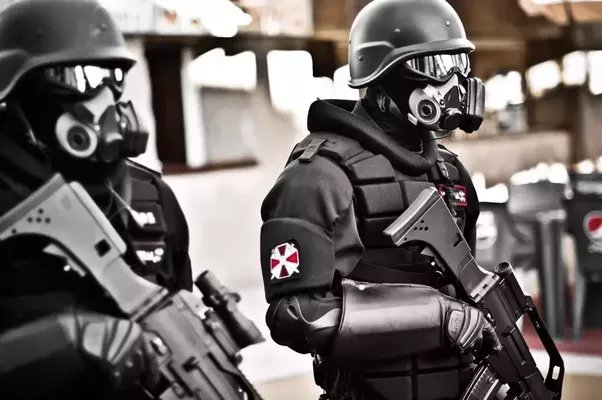
U.S. Department of Defense Plan For A Zombie Apocalypse
A U.S. Government 'Zombie' Plan?
David Sturt and Todd Nordstrom
Former Contributor
May 29, 2014,11:43am EDT

A U.S. Government 'Zombie' Plan?
In 2011 a plan drafted by the U.S. Government called CONPLAN 8888-11, “Counter-Zombie Dominance” was revealed to the public. The document details a strategy to defend against a zombie attack. And, yes, it’s real. We verified that the U.S. Government did in fact publish this report. And while...
 www.forbes.com
www.forbes.com
In 2011 a plan drafted by the U.S. Government called CONPLAN 8888-11, “Counter-Zombie Dominance” was revealed to the public. The document details a strategy to defend against a zombie attack. And, yes, it’s real.
We verified that the U.S. Government did in fact publish this report. And while reading it, we discovered some truly fresh thinking. In its own way it was innovatively brilliant—especially coming from a place where we might not expect such creative thinking, the United States Government.
Creators of the tongue in cheek “Counter-Zombie Dominance” document purposely chose zombies to disrupt their own tired-out thinking. The design of the plan produced serious strategic value. It is used to help defense plan creators and trainers explore unexpected, unplanned-for threats and learn how to strategically develop defenses for any possible variable or threat.
According to the DISCLAIMER in CONPLAN 8888-11, document creators write, “This plan was not actually designed as a joke. During the summers of 2009 and 2010, while training augmentees from a local training squadron about JOPP, members of the USSTRATCOM component found out (by accident) that the hyperbole involved in writing a ‘zombie survival plan’ actually provided a very useful and effective training tool.”
Basically, planners realized that disruptive political fallout could ensue if they were to train using specific named enemies. By using zombies as the enemies, planners avoided the risk of the public assuming there was a real current threat, but more importantly they opened a new level of thinking—the fictional nature allowed planners to break out of their old mindsets.
Even more interesting was the document’s release to the public. The writers of the plan stated in the DISCLAIMER, “Our intent was to place this tool ‘into the wild’ so that others who were interested in finding new and innovative ways to train planners could have an alternative and admittedly unconventional tool at their disposal…”
Basically, planners were having a blast with the new, innovative way of thinking. And, it worked. But, should “out-of-the-box thinking” really mean “out-of-this-world thinking?”
We all have comfort zones. We all can get stuck focused on the reality and seriousness of our businesses. Playing with ideas like a zombie attack might at first seem like a juvenile and pointless approach to problem solving. But, look at how it opened the eyes and ideas of those in the U.S. Government—a group who takes their jobs extremely seriously.
If you’re looking for some fresh thinking, consider stepping out of the comforts of your day-to-day business and into your discomfort zone.
Here are some guidelines to getting “uncomfortable”:
1. Identify your own zombies: What are the biggest potential threats to your business? What is it about them that reveals your own vulnerabilities. Do the threats exist because of a real weakness in your business model, or because you just don’t want to change your business? If you came up with an idea to neutralize the threat, what would that look like? Who would fight you over it? Why?
2. Dump Your Inner Circle for a Day: Look for perspectives of people who may not agree with you. A study conducted by Forbes Insights and the O.C. Tanner Institute which culled through 1.7 million cases of award-winning work, found that people who reached beyond their inner circle, to purposely have conversations with people who may have opposing, different, unbiased or even outlandish perspectives are 3.4 times more likely to create bottom-line financial results.
3. Find the Opposites and Opportunities: One of the most interesting aspects of CONPLAN 8888-11 was that the planners even removed and reversed fictional stereotypes of zombies. Vegetarians? Really? Consider product innovations that bring opposites together. For example, what if you could offer the highest quality and the lowest price, like Costco did. By exploring the outlandish—and playing out “What would happen if…”, you’ll consider things you never would have thought of before.
When it comes to comfort zones at work, the scariest option is “no change” at all—because that’s when we all become the walking dead. Get uncomfortable and see what it does for new thinking and new growth.
Forget AI and human cloning.
They just gonna create humans from scratch to replace you.
Scientists report creation of first human synthetic model embryos
By Brenda Goodman, CNN
Updated 4:55 PM EDT, Thu June 15, 2023

 amp.cnn.com
amp.cnn.com
A team of researchers in the United States and United Kingdom say they have created the world’s first synthetic human embryo-like structures from stem cells, bypassing the need for eggs and sperm.
These embryo-like structures are at the very earliest stages of human development: They don’t have a beating heart or a brain, for example. But scientists say they could one day help advance the understanding of genetic diseases or the causes of miscarriages.
The research raises critical legal and ethical questions, and many countries, including the US, don’t have laws governing the creation or treatment of synthetic embryos.
The pace of discoveries in this field and the growing sophistication of these models have alarmed bioethics experts as they push ever closer to the edge of life.
“Unlike human embryos arising from in vitro fertilization (IVF), where there is an established legal framework, there are currently no clear regulations governing stem cell derived models of human embryos. There is an urgent need for regulations to provide a framework for the creation and use of stem cell derived models of human embryos,” James Briscoe, associate research director at the Francis Crick Institute, said in a statement.

Dr. Magdalena Zernicka-Goetz described the work in a presentation Wednesday to the International Society for Stem Cell Research’s annual meeting in Boston. Zernicka-Goetz, a professor of biology and biological engineering at CalTech and the University of Cambridge, said the research has been accepted at a well-regarded scientific journal but has not been published. The research was first reported by The Guardian.
Zernicka-Goetz and her team, along with a rival team in Israel, had previously described creating model embryo-like structures from mouse stem cells. Those “embryoids” showed the beginnings of a brain, heart and intestinal tract after about eight days of development.
The embryo-like structures that Zernicka-Goetz says her lab has created were grown from single human embryonic stem cells that were coaxed to develop into three distinct tissue layers, she said. They include cells that would typically go on to develop a yolk sac, a placenta and the embryo itself.
She told CNN that the embryo-like structures her lab has created are also the first to have germ cells that would go on to develop into egg and sperm.
“I just wish to stress that they are not human embryos,” Zernicka-Goetz said. “They are embryo models, but they are very exciting because they are very looking similar to human embryos and very important path towards discovery of why so many pregnancies fail, as the majority of the pregnancies fail around the time of the development at which we build these embryo-like structures.”
She said that to her knowledge, it was the first time a human model embryo had been created with three tissue layers. But she stressed that while it mimics some of the features of a natural embryo, it doesn’t have all of them.
Researchers hope these model embryos will shed light on the “black box” of human development, the period following 14 days after fertilization, which is the agreed limit for scientists to grow and study embryos in a lab.

Right now, the synthetic model human embryos are confined to test tubes. It would be illegal to implant one in a womb, and animal research with stem cells from mice and monkeys has shown that even when scientists have attempted to implant them, they don’t survive – probably because researchers haven’t figured out how to fully replicate the conditions of pregnancy.
Zernicka-Goetz said that the aim of her research wasn’t to create life but to prevent its loss, understanding why embryos sometime fail to develop after fertilization and implantation.
“We know remarkably little about this step in human development, but it is a time where many pregnancies are lost, especially in an IVF setting,” Roger Sturmey, senior research fellow in maternal and fetal health at the University of Manchester in the UK, said in a statement.
“Currently, we can say that these ‘synthetic embryos’ share a number of features with blastocysts, but it is important to recognise that the way that synthetic embryos are formed is different to what happens when a normal embryo forms a blastocyst,” he said. “There is much work to be done to determine the similarities and differences between synthetic embryos and embryos that form from the union of an egg and a sperm.”

Researchers say they have created the first synthetic human embryo-like structures in the world.
They just gonna create humans from scratch to replace you.
Scientists report creation of first human synthetic model embryos
By Brenda Goodman, CNN
Updated 4:55 PM EDT, Thu June 15, 2023

Scientists report creation of first human synthetic model embryos | CNN
A team of researchers in the United States and United Kingdom say they have created the world’s first synthetic human embryo-like structures from stem cells, bypassing the need for eggs and sperm.
A team of researchers in the United States and United Kingdom say they have created the world’s first synthetic human embryo-like structures from stem cells, bypassing the need for eggs and sperm.
These embryo-like structures are at the very earliest stages of human development: They don’t have a beating heart or a brain, for example. But scientists say they could one day help advance the understanding of genetic diseases or the causes of miscarriages.
The research raises critical legal and ethical questions, and many countries, including the US, don’t have laws governing the creation or treatment of synthetic embryos.
The pace of discoveries in this field and the growing sophistication of these models have alarmed bioethics experts as they push ever closer to the edge of life.
“Unlike human embryos arising from in vitro fertilization (IVF), where there is an established legal framework, there are currently no clear regulations governing stem cell derived models of human embryos. There is an urgent need for regulations to provide a framework for the creation and use of stem cell derived models of human embryos,” James Briscoe, associate research director at the Francis Crick Institute, said in a statement.

Dr. Magdalena Zernicka-Goetz described the work in a presentation Wednesday to the International Society for Stem Cell Research’s annual meeting in Boston. Zernicka-Goetz, a professor of biology and biological engineering at CalTech and the University of Cambridge, said the research has been accepted at a well-regarded scientific journal but has not been published. The research was first reported by The Guardian.
Zernicka-Goetz and her team, along with a rival team in Israel, had previously described creating model embryo-like structures from mouse stem cells. Those “embryoids” showed the beginnings of a brain, heart and intestinal tract after about eight days of development.
The embryo-like structures that Zernicka-Goetz says her lab has created were grown from single human embryonic stem cells that were coaxed to develop into three distinct tissue layers, she said. They include cells that would typically go on to develop a yolk sac, a placenta and the embryo itself.
She told CNN that the embryo-like structures her lab has created are also the first to have germ cells that would go on to develop into egg and sperm.
“I just wish to stress that they are not human embryos,” Zernicka-Goetz said. “They are embryo models, but they are very exciting because they are very looking similar to human embryos and very important path towards discovery of why so many pregnancies fail, as the majority of the pregnancies fail around the time of the development at which we build these embryo-like structures.”
She said that to her knowledge, it was the first time a human model embryo had been created with three tissue layers. But she stressed that while it mimics some of the features of a natural embryo, it doesn’t have all of them.
Researchers hope these model embryos will shed light on the “black box” of human development, the period following 14 days after fertilization, which is the agreed limit for scientists to grow and study embryos in a lab.

Right now, the synthetic model human embryos are confined to test tubes. It would be illegal to implant one in a womb, and animal research with stem cells from mice and monkeys has shown that even when scientists have attempted to implant them, they don’t survive – probably because researchers haven’t figured out how to fully replicate the conditions of pregnancy.
Zernicka-Goetz said that the aim of her research wasn’t to create life but to prevent its loss, understanding why embryos sometime fail to develop after fertilization and implantation.
“We know remarkably little about this step in human development, but it is a time where many pregnancies are lost, especially in an IVF setting,” Roger Sturmey, senior research fellow in maternal and fetal health at the University of Manchester in the UK, said in a statement.
“Currently, we can say that these ‘synthetic embryos’ share a number of features with blastocysts, but it is important to recognise that the way that synthetic embryos are formed is different to what happens when a normal embryo forms a blastocyst,” he said. “There is much work to be done to determine the similarities and differences between synthetic embryos and embryos that form from the union of an egg and a sperm.”

Researchers say they have created the first synthetic human embryo-like structures in the world.
Doomed
This more than likely, has already been done, their just now reporting it.Forget AI and human cloning.
They just gonna create humans from scratch to replace you.
Scientists report creation of first human synthetic model embryos
By Brenda Goodman, CNN
Updated 4:55 PM EDT, Thu June 15, 2023

Scientists report creation of first human synthetic model embryos | CNN
A team of researchers in the United States and United Kingdom say they have created the world’s first synthetic human embryo-like structures from stem cells, bypassing the need for eggs and sperm.amp.cnn.com
A team of researchers in the United States and United Kingdom say they have created the world’s first synthetic human embryo-like structures from stem cells, bypassing the need for eggs and sperm.
These embryo-like structures are at the very earliest stages of human development: They don’t have a beating heart or a brain, for example. But scientists say they could one day help advance the understanding of genetic diseases or the causes of miscarriages.
The research raises critical legal and ethical questions, and many countries, including the US, don’t have laws governing the creation or treatment of synthetic embryos.
The pace of discoveries in this field and the growing sophistication of these models have alarmed bioethics experts as they push ever closer to the edge of life.
“Unlike human embryos arising from in vitro fertilization (IVF), where there is an established legal framework, there are currently no clear regulations governing stem cell derived models of human embryos. There is an urgent need for regulations to provide a framework for the creation and use of stem cell derived models of human embryos,” James Briscoe, associate research director at the Francis Crick Institute, said in a statement.

Dr. Magdalena Zernicka-Goetz described the work in a presentation Wednesday to the International Society for Stem Cell Research’s annual meeting in Boston. Zernicka-Goetz, a professor of biology and biological engineering at CalTech and the University of Cambridge, said the research has been accepted at a well-regarded scientific journal but has not been published. The research was first reported by The Guardian.
Zernicka-Goetz and her team, along with a rival team in Israel, had previously described creating model embryo-like structures from mouse stem cells. Those “embryoids” showed the beginnings of a brain, heart and intestinal tract after about eight days of development.
The embryo-like structures that Zernicka-Goetz says her lab has created were grown from single human embryonic stem cells that were coaxed to develop into three distinct tissue layers, she said. They include cells that would typically go on to develop a yolk sac, a placenta and the embryo itself.
She told CNN that the embryo-like structures her lab has created are also the first to have germ cells that would go on to develop into egg and sperm.
“I just wish to stress that they are not human embryos,” Zernicka-Goetz said. “They are embryo models, but they are very exciting because they are very looking similar to human embryos and very important path towards discovery of why so many pregnancies fail, as the majority of the pregnancies fail around the time of the development at which we build these embryo-like structures.”
She said that to her knowledge, it was the first time a human model embryo had been created with three tissue layers. But she stressed that while it mimics some of the features of a natural embryo, it doesn’t have all of them.
Researchers hope these model embryos will shed light on the “black box” of human development, the period following 14 days after fertilization, which is the agreed limit for scientists to grow and study embryos in a lab.

Right now, the synthetic model human embryos are confined to test tubes. It would be illegal to implant one in a womb, and animal research with stem cells from mice and monkeys has shown that even when scientists have attempted to implant them, they don’t survive – probably because researchers haven’t figured out how to fully replicate the conditions of pregnancy.
Zernicka-Goetz said that the aim of her research wasn’t to create life but to prevent its loss, understanding why embryos sometime fail to develop after fertilization and implantation.
“We know remarkably little about this step in human development, but it is a time where many pregnancies are lost, especially in an IVF setting,” Roger Sturmey, senior research fellow in maternal and fetal health at the University of Manchester in the UK, said in a statement.
“Currently, we can say that these ‘synthetic embryos’ share a number of features with blastocysts, but it is important to recognise that the way that synthetic embryos are formed is different to what happens when a normal embryo forms a blastocyst,” he said. “There is much work to be done to determine the similarities and differences between synthetic embryos and embryos that form from the union of an egg and a sperm.”

Researchers say they have created the first synthetic human embryo-like structures in the world.
Hey dawg I can't remember what I posted that you wanted reupped
zecharia sitchin the 12th planet pleaseHey dawg I can't remember what I posted that you wanted reupped
Oil see if I can find it again after I get off workzecharia sitchin the 12th planet please
dudes accent is a little hard to follow but try to pay attention to the info he presents
the vid is short so try to watch till the end
hell watch it a couple of times
TANETERU- land of the GODS. AKA black people.
you can download this pdfzecharia sitchin the 12th planet please
the icon is in the far right corner,upper right
https://readerslibrary.org/wp-content/uploads/The-Twelfth-Planet.pdf
or search the 12th planet free pdf
the 12th planet free pdf
NiceTANETERU- land of the GODS. AKA black people.
https://www.modernghana.com/news/1208671/africa-the-land-of-gods.htmlTANETERU- land of the GODS. AKA black people.
taneteru
you can download this pdf
the icon is in the far right corner,upper right
https://readerslibrary.org/wp-content/uploads/The-Twelfth-Planet.pdf
or search the 12th planet free pdf
the 12th planet free pdf


Similar threads
- Replies
- 5
- Views
- 297
- Replies
- 123
- Views
- 9K
- Replies
- 31
- Views
- 9K
- Replies
- 68
- Views
- 3K


